






 PETIT VERDOT • PETITE SIRAH • CABERENT FRANC • MERLOT • CABERNET SAUVIGNON
PETIT VERDOT • PETITE SIRAH • CABERENT FRANC • MERLOT • CABERNET SAUVIGNON

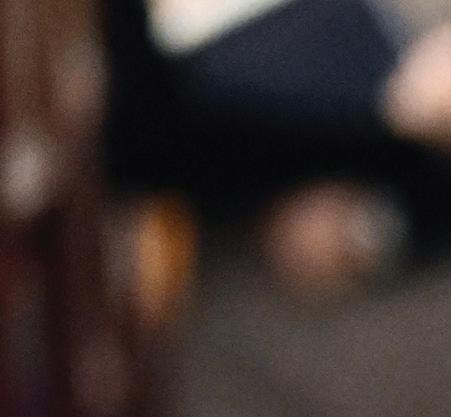






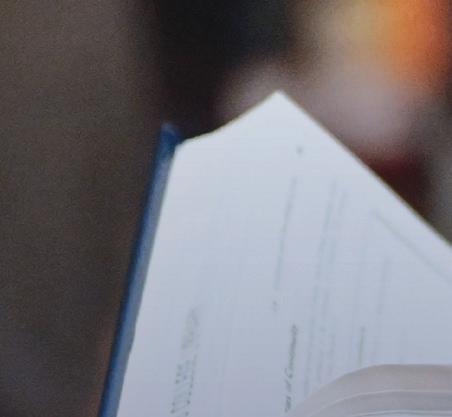
















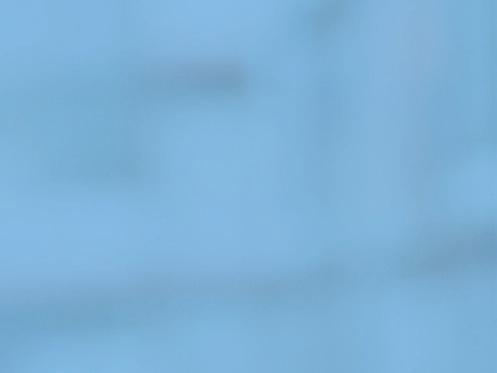












PUBLISHER
Mica Soffer
EDITOR
Rabbi Yehuda Ceitlin
CONTRIBUTING WRITERS
Zev Gotkin
Mendel Levy
Mordechai Schmutter
Dovid Zaklikowski
Eli Hecht
Devora Shabtai Sony Perlman
COVER PHOTO
Shalom Burkis
PHOTOS JEM
Hasidic Archives
Shalom Burkis Nechama Photography
Phone: 718-427-2174 ext. 2
Email: ads@COLlive.com
Phone: 718-427-2174 ext. 1
Email: Editor@COLlive.com
COLlive Magazine is published in print periodically by the Collive Media Group Inc. and is distributed free in Brooklyn, NY.

COLlive does not endorse any products or services reported about or advertised in COLlive Magazine unless specifically noted. The acceptance of advertising in COLlive Magazine does not constitute a recommendation, approval or other representation o quality of products or services, or the credibility of any claims made by advertisers including, but not limited to, the kashrus or advertised food products. The use of any products or services advertised in COLlive Magazine is solely at the user’s risk and COLlive accepts no responsibility or liability in connection therewith.
FROM THE

Each year, we run a bus stop ad in Crown Heights welcoming the Rebbe’s Shluchim from around the world for the annual Kinus. We typically try to choose a timely slogan or theme. This year it was an easy and obvious pick. The ad simply read in Hebrew, “Hakhel es ha’am, ha’anashim v’hanoshim v’hataf.”
“Assemble the people: the men, and the women, and the children,” those special words from the Torah (Devarim 31:12) read. And the purpose of that gathering was “in order that they learn and fear the Lord, your G-d, and they will observe all the words of this Torah.”
It seemed like a perfect fit. The Shluchim are busy on a daily basis gathering and teaching people, and we at COLlive are doing similar work, albeit through an online medium. People log on to our website hourly and in addition to the news, they are united around the many shiurim, farbrengens and educational videos we feature.
It was only later that someone called my attention to a sicha the Rebbe said on Sukkos 5748/1987 - which was a year of Hakhel - that amazed me how relevant and apt its message is to us, years later.
The Rebbe said that with the availability of the technology at the time (the phone and the radio), people could perform Hakhel “even in the place that is most far physically,” the most distant, far-flung location on the other side of the world.
The Rebbe went on to describe how immediately on Motzoei Shabbos, after Havdalah, a person rushes to his phone (the corded home telephone, that is) and calls a business associate halfway across the world to close on a lucrative deal, and that it’s done without delay.

The Rebbe then called on utilizing technology l’shem shamayim - for the sake of Heaven. He said it allowed reaching out to a Jew in another corner of the earth until the mission of “Assemble the people: the men, and the women, and the children” is fully fulfilled.
It is as if the Rebbe was describing the current habitual use of technology and foresaw its far-reaching ability.
The Rebbe’s positive approach to technology was evident in the 1990s with the Chanukah Live televised global Menorah Lighting broadcast. Even before the age of Zoom, the Rebbe utilized technology to unite Jews around the world and allow them to “see and be seen.”
Every person today has a circle of influence - both in person and onlineand can create mini Hakhel gatherings by sharing Torah and Chassidus. At COLlive, we certainly plan to do so on Chanukah, the rest of this Hakhel year, and beyond.
Happy Chanukah, Mica Soffer


To the Sons and Daughters of Our People Israel Everywhere Our People Israel, Everywhere, G‑d Bless you all!
Greeting and Blessing: As we areabout to begin the celebration of Chanukah by — among other things — kindling the Chanukah Lights each night of Chanukah, this is a time of reflection on the meaningful lessons of the Festival of Lights. to quote my father in law of saintly memory: “We should listen attentively to what the Chanukah Lights are telling us.”
It would be fitting, therefore, to take a few minutes to reflect on some aspects of the Mitzvah of kindling the Chanukah Lights.
To perform this Mitzvah one needs, of course, a candle or an oil lamp. The candle, or oil and wick, are common material things; yet, when kindled in fulfillment of the Divine precept, in remembrance of the miraculous events “in those days at this time,” after reciting the appropriate benedictions — “these lights (become) sacred, and we are not permitted to make use of them, but only to look at them, in order to offer thanks and praise to Your great Name for Your miracles, for Your wonders and for Your salvations.”
The Mitzvah of the Chanukah Lights symbolizes — in a tangible and visible way — all the Mitzvot of the Torah, all of which are defined in terms of light: Ner Mitzvah v’Torah Or (“A Mitzvah is a candle, and the Torah is Light” — Prov. 6:23). In the case of all Mitzvot, some material object and/or physical and mental activity is involved (as wool in Tzitzis, leather in Tefillin, etc.). Yet, when that material thing is dedicated to a sacred purpose, in fulfillment of G‑d’s command, it becomes sacred, and the performance of the Mitzvah creates a light which, though invisible to the physical eye, irradiates the person performing the Mitzvah as well as the surrounding material world, making
them more spiritual, and enabling them to transcend the confines of the physical world.
The Mitzvah of Ner Chanukah has the unique feature of being performed in a steadily increasing manner: One candle is lit the first night; two the second, and so on. This reminds us forcefully — again in a visible and concrete way — that all things connected with Torah and Mitzvot have to be on the increase. No matter how satisfactory the level of one’s Torah —and Mitzvot — experience may be on any given day, it is not adequate for the next day; and next day’s advancement — sufficient in itself — is still inadequate for the day after Living Yiddishkeit requires continuous growth, there is always room for enriching one’s spiritual life. A further unique feature of the Mitzvah of Ner Chanukah is that while it is kindled within the home, and illuminates it with the sacred light of Torah and Mitzvot, it is required to be seen also “outside.” The basic reason for this is to “publicize the miracle of Chanukah.” But, symbolically, it conveys the message that everyone of us who lights Chanukah candles should not forget those of our brethren who, for one reason or another, are unaware of Chanukah; unaware, perhaps, even of their Jewish identity and heritage, and are walking in darkness outside. It is our duty to reach out to them and bring the light of living Yiddishkeit into their hearts and homes. And these efforts, too, should be carried on in the spirit of Chanukah — in a growing measure.
In summary, the Chanukah Lights remind us that every Jew, man and woman (both are duty bound to fulfill this Mitzvah), has a G‑d given task to spread the light of the Torah and Mitzvot in their personal life, in their home and family, and in the community at large; and to do all this in a consistently growing measure.
If this task may seem too difficult — the three benedictions recited over the Chanukah Lights should dispel all doubts:
The first is an expression of gratitude to HaShem “who has sanctified us with His commandments and commanded us to kindle the Chanukah Light.” It also reminds us that since G‑d has commanded every Jew to fulfill His Mitzvot, it is certain that He has provided every Jew with all the capacities necessary to carry out His command. Obviously, G‑d would not give one a task which he knows to be beyond the Individual’s capacity But sometimes there may be external, seemingly insurmountable, hindrances in the way of living Jewishly to the fullest degree. So the second benediction — “... who performed miracles for our forefathers in those days, at this time” — should not let us become disheartened. No Jew has had greater difficulty to live Jewishly than our forefathers in those days, under the oppression of that mad tyrant Antiochus. But when Jews —like Mattityahu and his sons and their followers — were determined to give their lives for Torah and Mitzvot — G‑d performed miracles for them and “delivered the mighty into the hands of the (physically) weak, the many into the hands of the few,” etc. G‑d is “still” capable to perform miracles for Jews, if it be necessary.
The third benediction (recited only the first time the Chanukah Light is kindled) is the familiar Shehecheyanu: “... who has granted us life, sustained us, and enabled us to reach this occasion.” It is a joyous blessing, recited on joyous occasions, and it tells us that G‑d gives us the strength to fulfill all His Mitzvot with vitality, enthusiasm and joy.
The celebration of Chanukah, beginning on the 25th of Kislev, commemorates the rededication of the Beis Hamikdosh, the kindling of the Ner Tomid (the Perpetual Light of the Menorah), and the resumption of the Divine service in the purified Sanctuary.
This in summary is also the central instruction of Chanukah for the every day life and conduct of every Jew, which should be in keeping with G‑d’s request: Make for Me a Sanctuary that I may dwell in theme (within every Jew). In other words, Hashem requests of every Jew, man and woman, to build and consecrate an inner “sanctuary”, on the Altar of which he and she offer to G‑d of their time, energy, money and their personal gratification.
Doing all this, and doing it with joy and enthusiasm, is a continuous process of dedication and re dedication, a real “Chanukah” in its every day profoundest sense.
May G‑d grant that everyone of us be truly inspired by the teachings of Chanukah and of the Chanukah Lights, and translate this inspiration into actual deeds, in our everyday life and conduct.
This will surely hasten the end of the dark night of the Golus (exile), and bring the bright dawn and day of the true and complete Geulo, through our righteous Moshiach, and the fulfillment of the Divine request and promise to: “Raise your voice in song, sound the drums, the pleasant harp (Kinnor) and the lute.” The Kinnor of the Beis Hamidkosh in Moshiach’s times, the Kinnor with eight strings.
With prayerful wishes for a bright Chanukah and a bright always, and With blessing,
 By Dovid Zaklikowski
By Dovid Zaklikowski

It is hard to stop Devorah Haberstam. Literally. When she enters a room, it is in a storm. When she speaks, her words are quick and to the point. But when the prominent Jewish activist, referred to as a powerhouse by those who know her, arrives at the ramp from the FDR Drive to the Brooklyn Bridge, she always stops.
Over a stretch of 1300 feet, some 13 road signs announce The Ari Halberstam Memorial Ramp in commemoration of her 16-year-old son who was murdered by Lebanese-born terrorist Rashid Baz in 1994. “Every time I see the signs,” she says, “my heart stops. I think to myself, ‘Ari, your blood is on this bridge.’ They were targeting the Rebbe. Ari took his place.”
Despite her age, Halberstam, a spitting image of her son, is still adamant as she was back in 1995 when the signs were passed into law in a unanimous New York City Council vote, that the signs are important. Kenneth Fisher, who served as a council member, told the New York Times: “It was [a] real statement by the Council and by the mayor that this was not simply a case of road rage. [Halberstam] was a very effective advocate for the notion that her son’s murder should be recognized.”
Halberstam says that the signs are more relevant than ever in our age of instant information. “What happened on that day on the bridge is a symbol of
antisemitism in the United States,” she explains. When people see the sign, “they Google it and they learn what our society is capable of. It promotes that this cannot happen again.”
After she concludes reciting a chapter of Tehillim on the bridge in memory of her son and turns off her hazard lights, she will encounter different kinds of signs. They direct people to her greatest accomplishment in memory of
her son: The Jewish Children’s Museum in Crown Heights, created in partnership with city, state and federal agencies and supporters.
“While there is a need to remember the Jews who were murdered throughout our history,” she explained, “it is tragic to see how many monuments are built in their memories. Jewish education, Jewish identity, and Jewish pride are the antidotes to antisemitism.”

our way of life.
Looking back over the nearly two decades the museum has been open, “I could never have envisioned the impact that it has made,” she says.
To date, over 3 million visitors have come to the museum.

“We have a great team working every day to create new and innovative programs to excite the children.”
It is why she is now embarking on building an additional floor in the museum that will be called Ari’s Exhibit, “Sharing our past, shaping our future.”
This space will feature the mission of the museum and will have cutting-edge technology that she hopes will attract even more children and visitors.
When I arrived for this interview, Halberstam was still on a high from a month-long visit from her brother, Rabbi Yehoshua Hecht of Melbourne, Australia. “He lives, breathes Torah,” she tells me, “I loved every moment of the visit.”
For her, it was a throwback
“When a child comes to the museum,” she says, “and they learn that the Jewish people have a history over thousands of years that we have practiced for generations, it is an eye-opener. They understand that our culture is made up of traditions that are our inheritance. By educating youngsters through hands-on workshops and interactive exhibits they finally begin to understand what ‘the other’ means. We teach them about our holidays, our dress, and
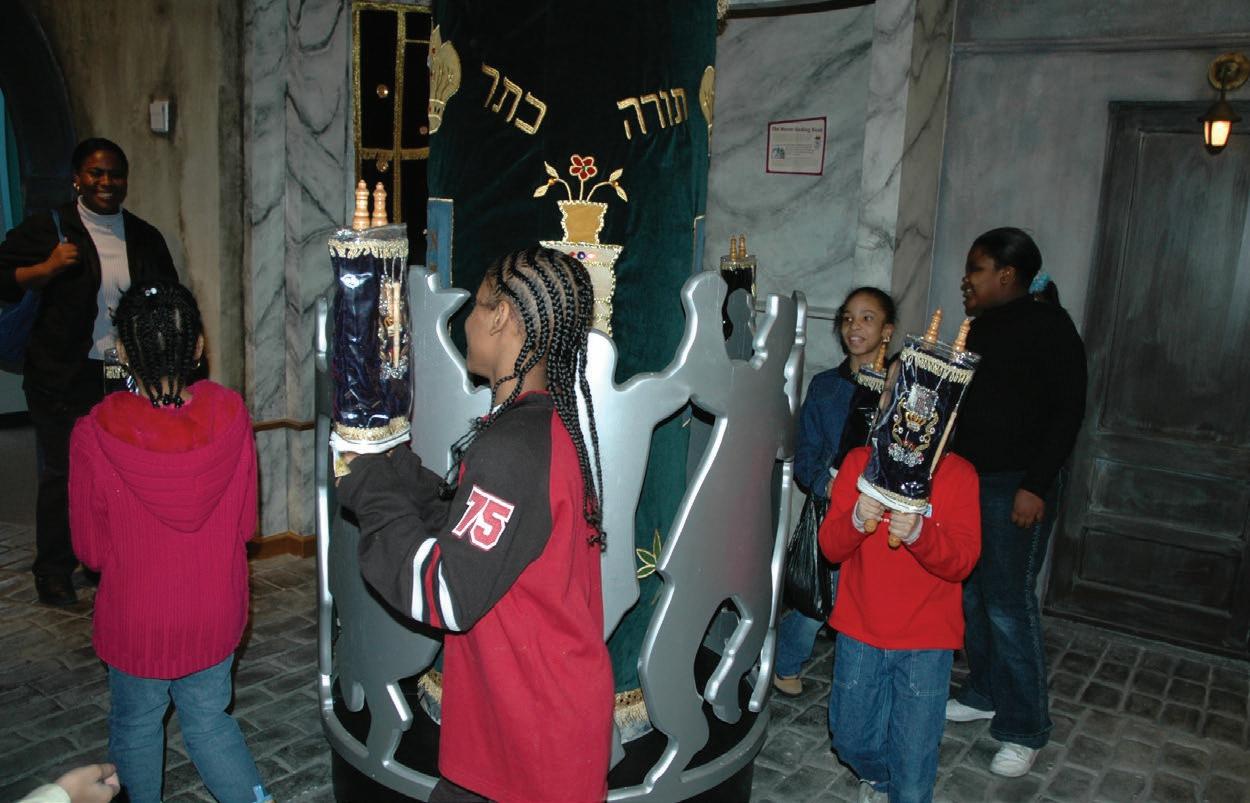
to her childhood, when her father would be up early in the morning learning from a Talmud at the table. “There was no such thing as a day going easy,” she recalled about life in her parent’s home. “We were in this world on a mission.”
Her father would come home at midnight from his typesetting business, laying college newspapers and magazines. “All of us were involved [in the work],” she says. “I learned how to proofread. It was a family affair.”
She says her mother was one of the hardest-working people she knew. “She was the kind of person who did not talk that much,” but she learned from her actions. The home was always sparkling and Shabbos was the important time of the week. “When I think of my mother, I think of the smell of the kitchen,” she says. Until this day, because of her, “I will never make appointments on Friday,” Halberstam says, dedicating the day to preparing for the holy day of rest.
From a young age, she would go to shul with her father. “He expected the same from the girls and the boys. There was no such thing as less than 100%,” she says.
“The Rebbe was very dear to me. He was my guiding light for everything in my life,” she says. “There was nothing that I would not tell the Rebbe. He looked out for me.” Halberstam chose
to reveal little about her long exchanges; some of the Rebbe’s responses were said to be three pages long.
She said those responses gave her the strength to overcome the many challenges in her life. “Don’t ever say that something you want to do could never happen,” she paraphrases the Rebbe telling her, instilling in her that she could do anything she wanted to. “The Rebbe was right. I don’t let anything stand in my way.” Her faith in G-d, perseverance, and courage have made her rise up to some of her greatest challenges.
Halberstam likes to use a metaphor to explain the impact of her formative years. She recalls that East New York Savings Bank came to her school and encouraged every student to open a bank
account. “Put a quarter, a dollar in the account,” they told the youngsters. “When you get older, the quarters, the dollars, will add up to a large sum.”
She says that life is like a savings account, what her parents, and grandparents gave her, and what she learned from the Rebbe, have accumulated and enriched her life. “That is how I keep going,” she says.
Every time I mention her son Ari, it brings another flow of tears. “I want to be remembered as Ari’s mom,” Halberstam says, “but not just Ari’s, all my children, tzu lange yorin. My children are my life.”
The activist likes to say that she is a Yankee through and through. Her father taught her

to study, daven and be serious in her service of Hashem. “But, you also have fun. You play baseball, keep up with the news and wake up in the morning to 1010 WINS News Radio.”
She says Ari “was the embodiment of ruchniyus and gashmiyus, of why G-d put us in this world.” He was a good learner and spent many extra hours davening. He never went to sleep unless he finished his Chitas and Rambam. On the other hand, “He was very spirited, he loved sports and wore a size 13.5 sneaker. He was humble to a fault, and was also very competitive; he was a great kid,” she says. Being then married to someone who assisted in the home of the Rebbe and Rebbetzin Chaya Mushka Schneerson, Halberstam’s life became intertwined with Beis Harav. Her children would regularly go after school to visit the Rebbetzin, whom they lovingly called “dodah” (aunt in Hebrew). “They cared a lot about my children,” Halberstam says. “They loved them dearly.”
Many times, when the Rebbe would see Ari, he would report to the Rebbetzin, “He was in a good mood,” or “he was serious.” Yet, Ari never took the relationship for granted. When he would go to the Rebbe to receive a dollar for tzedaka, the mother recalled, he would turn white like a sheet. “He was a real soldier.” She could never bring those moments back, they are now memories, “You don’t get a

second chance.” Because of that, she tries not to waste time, “I truly believe that I have to use every moment on this earth. If I am able to, I help [others], whether it is a big or small issue.”
Ari’s murder during the attack on the students in the van on the Brooklyn Bridge was one of the most egregious antisemitic terrorist attacks in the United States and New York City history. What happened that day was the beginning of more to come.
She has been a leading voice
against terrorism in the United States, raising awareness before 9/11 and co-authoring the first New York State laws on terrorism with former Governor Pataki. She is invited to train and lecture all branches of law enforcement in
this country and internationally. “Devorah Halberstam is a true example of the strength of our nation,” the former U.S. Attorney General Michael Mukasey has said.
FBI assistant director Joseph Demarest said Halberstam is a true fighter against
HALBERSTAM’S CHILDREN WOULD REGULARLY GO AFTER SCHOOL TO VISIT THE REBBETZIN, WHOM THEY LOVINGLY CALLED “DODAH” (AUNT)Halberstam’s parents Rabbi Peretz and Chaya Hecht
terrorism. “A woman who has demonstrated an endless pursuit of justice, everlasting love for her family, dedication for victim’s rights, and patriotism for her country,” he said during an award ceremony.

As Chair of the NYPD’s Civilian Hate Crimes Review Panel (and the Jewish representative) and NYPD Honorary Commissioner for Community Safety, she says her work to fight hate and antisemitism never ends. She has no plans of resting, “As long as G-d gives me strength and stamina, I will continue my mission,” she says.
While Devorah is a leading voice and authority in politics, she takes special care of her community in Crown Heights. Living in Crown Heights
most of her life, she is always conscious and concerned about the safety of our neighborhood and bringing people together, working closely with the local 71 Precint.
With that, she says, hate in the country is largely targeted against the Jewish
to shout out against it at every opportunity and say that this is not okay,” she says.
People who speak up against Jews, she says, “or any other ethnicity should be ostracized, rather than being accepted by anybody. Words matter and can lead to bad things. We have to nip it in the bud before
community, and it breeds because antisemites are being given a platform, whether it is coming from celebrities, sports figures, or others. “We need
it gains momentum. Sadly, however, at this point, it seems to have a life of its own.”
At what was dubbed “the World’s Largest Summit on
“I FEEL LIKE EVERY
TO THE
CHILDREN’S
WITH A PIECE OF MY SON ARI”
Antisemitism and Hate,”
New York City Mayor Eric Adams told the gathered, “I know somewhere out there is my good friend Devorah Halberstam, who has talked about this for so many years.”
Echoing Halberstam, the mayor said, “Antisemitism and extremism must not be ignored. It must be confronted, it must be called out. … Let’s rededicate ourselves to educating generations about the horrors of the past. Let’s dedicate ourselves to acting when we see injustices take place. Together, we can ensure that never is now.”
I try to fit Halberstam into a box, a file, and I cannot. There are too many accomplishments to enumerate, but I am not here for that. Over six hours, I try to understand what makes her tick. At one point, I wonder out loud, in contrast to how Chabad Houses are run, what it is like to be one of the lone women in the leadership of Chabad organizations in Crown Heights.
While she does not broach the topic, she does say that having more women involved in the decision-making would make a world of a difference to any organization.

While she herself is a trailblazer for women, she hopes more frum women will take the lead. Their life experience of running a home, making split-second decisions, scheduling how things are run, and on top of that many in our community
running businesses, they have a broad grasp of what an institution needs. “It is also how women think, they are much more soulful people. They think things out on emotional, and pragmatic levels,” she notes.
But for her, it was never a question if she should take on CEO positions in other organizations, which she was offered by many. The Rebbe wrote to her (paraphrased), “you will have plenty of extra time to volunteer in your capacity outside of Chabad,” but her main focus should always be to “use her talents within Chabad mosdos.”
Ari’s death was the catalyst for the Jewish Children’s Museum to be built in his memory.
“As a Jew, our response to tragedy is to build,” she says.
It was here she could find her greatest potential. Today, she says that every time she walks through the halls of the JCM, she has “a huge sense of nachas.” She says it is a validation that if there is a will we could be invincible, and “nothing will stand in your way.”
But on top of that, “I feel like every visitor to the museum leaves with a piece of Ari. Ari lives on in this museum,” Halberstam says.
- Dovid Zaklikowski is an author, biographer and archivist, his books can be found at HasidicArchives. com. His latest book about Reb Mendel Futerfas is My Gulag Life: Stories of a Soviet Prisoner. He could be reached at DovidZak@gmail.com
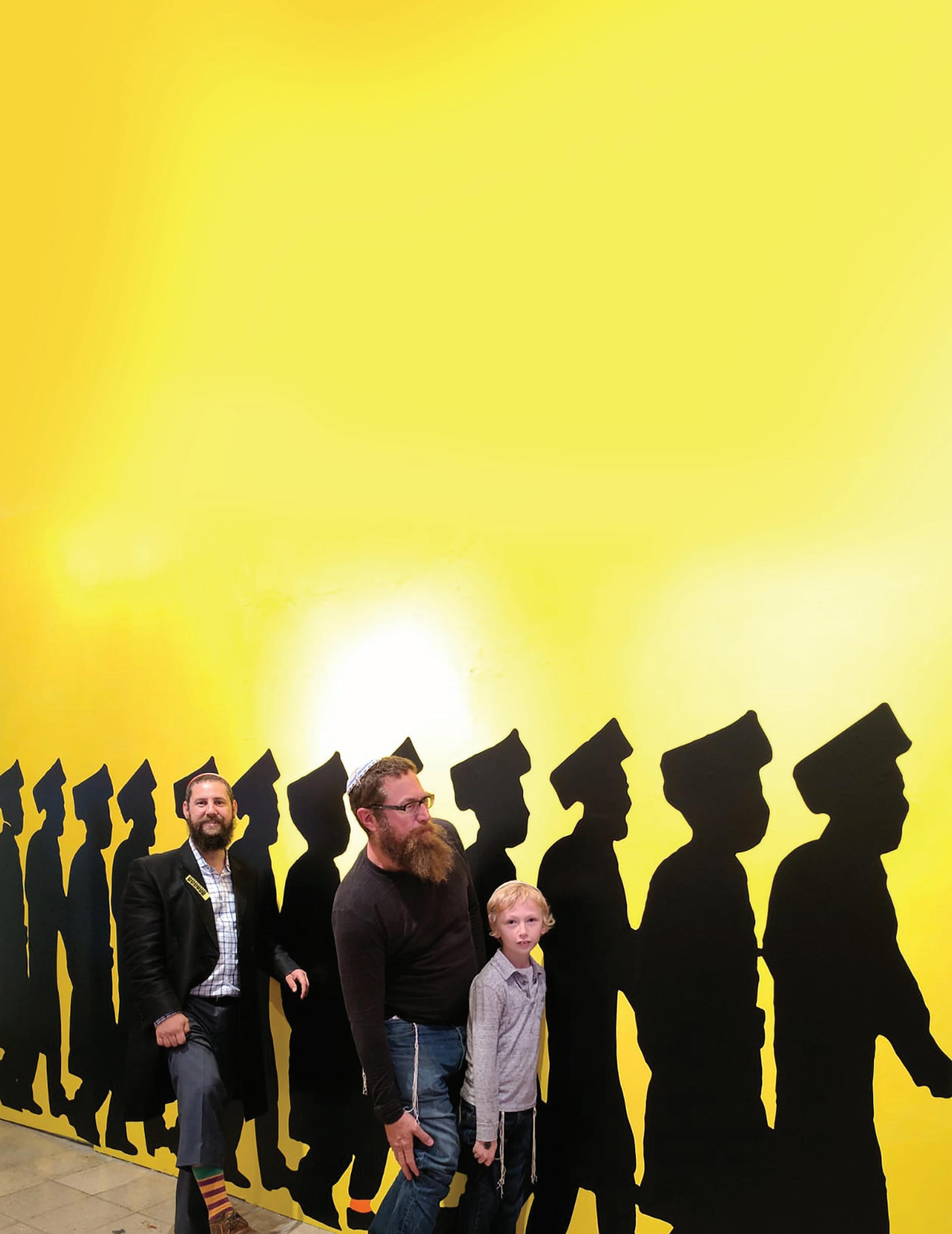 By Sara Trappler-Spielman
By Sara Trappler-Spielman
It has been seventeen years since Yitzchok Moully first debuted his distinct popart photo silkscreen works on canvas of bright colorful images from Jewish and Chassidic culture – dreidels and Chassidim dancing, kiddush cups and rabbis praying.
The Chassidic artist combined images that people don’t usually expect to see together. In some of his earlier works, he had a series called “ritual
objects” that placed a Zippo lighter alongside Shabbat candles, and a martini glass with a kiddush cup. A work titled “Williamsburg NY” featured the bridge that divides two worlds in the Brooklyn neighborhood – the Chassidic community on one side and artists on the other.
By juxtaposing vibrant colors with Jewish and Chassidic themes, Moully united these two worlds – pop art and
Judaism – that he says, “in essence, are not so disparate.” That fusion was brought to light during the 2017 Jerusalem Biennale, a festival held every two years at both indoor and outdoor spaces all over Jerusalem. The curator of the show, Noa Lea Cohn, was intrigued by a Moully creation titled “Orange Socks.” It inspired her show, themed “Popthodox / Black Humor” (pop art and Orthodox), where
two worlds of the Chareidi community come together.
The show featured over 10 artists with Moully’s piece front and center painted directly on a gallery wall, a painting he considers a self-portrait. “Orange Socks” portrays a line of Chassidim walking in black silhouettes, with one of them standing out by wearing orange socks. Originally a small painting, the curator envisioned it as life-size, so the figures went from 6 inches tall to 6 feet tall instead.
Moully, who has been often spotted wearing a bright pink yarmulke, orange socks, and a green tie accentuating his black kapota, explained that the show and the large mural piece
both explored “the humorous side of who we are.”
It’s not about going in the opposite direction, Moully stressed. After all, his clothes are not different from another Chassid, he looks the same, but the colored socks are symbolic of embarking on a personal journey. “Everyone needs to find their own unique path, which may or may not look similar to everyone else’s, but that’s not what matters. What matters is that it’s your path,” Moully said.
That moment was a real shift in his work. “People came from all walks of life and interacted with it. The way they stood in front of it, not just looking at it, but standing in front of it like they
were one of the people... they wanted to engage with the piece.”
Moully realized the power of creating something together with his audience. “They stop being spectators and become participants,” he said. “They’re co-creators in the process. A lot of people connected with this piece because it’s about finding your own way, your own journey.”
Moully’s life journey has been an eclectic one. He was raised on a commune in the Australian outback and enjoyed a natural and alternative lifestyle as a child. When his grandfather became ill, the family returned to Melbourne, where Moully’s mother visited a local shul, and met a Chabad Rabbi. Shortly after, she then enrolled Moully in Chabad’s Yeshivah College. On his first day there, his grandfather passed away. Moully felt like his grandfather was “passing on the Jewish tradition.”

His family then decided to move to the Holy Land of Israel “to combine two passions – a love of nature and Judaism.”
On the way, they visited New York. It was 1984, and Yitzchok Moully was five years old. His parents wrote to the Rebbe who advised them to stay in Crown Heights for the time being. Their ten-day trip was extended to four-and-a-half years, transforming the Moully family into Chassidim.
Moully attended Oholei Torah for three years and remembered being dismissed from school at 11 AM to attend the Didan Notzach dancing at 770 Eastern Parkway. The Hebrew date was the Fifth of Teves, when the Rebbe received legal autonomy over the Chabad Library. Every Shabbos morning, Moully would go to the large main shul of 770, “to say ‘Good Shabbos’ to the Rebbe as he came out to daven, and then I’d go outside to play.” He recalls sitting under the farbrengen table of the Rebbe on his birthday and the more somber occasion of the passing of the wife of the Rebbe, Rebbetzin Chaya Mushka Schneerson, of blessed memory.
Had the family left New York as originally intended, Moully said, he may have ended up as a lost surfer. Instead, he became a Lubavitcher chossid and witnessed historical moments that ended up inspiring his artwork years later. After the family had returned to Melbourne, Moully came across a farbrengen piece by artist Simcha Fetter. It displayed the “serious, strong event in a lively, abstract way, and it brewed within me and had a strong effect,” he recalled. “I wanted to depict that seeming clash and harmony between both worlds.”


Moully started by doing photography, then pop art with silk screen printing. His second collection, titled “Post Pop,”

was developed as abstract paint on canvas, where he took silk screen images and did more brush strokes and fluid movement and more conceptual work. While his style evolved, the messages stayed the same.
“As an artist, I’m not tied down to any one art form. My art is about ideas, then it becomes, ‘what medium can I use to communicate this idea?’ One day it’s canvas or fiberglass. Another day, I spray-paint murals, or create an augmented reality app, or use metal or wood. They’re all just tools to communicate my message. All just to transform the physical to create meaning from it. What has stayed constant through my work is the message of joy, Torah and mitvzos, and the power of change.”
After that Jerusalem show in 2017, Moully began creating street art, which he describes
as a turning point, a paradigm shift in his work. “I realized it’s less about me creating work in a studio as a hybrid rabbi and artist and instead creating a greater impact by bringing the artwork to the people, on public walls,” he said.
Two years later, Moully was invited back to the Jerusalem Biennale. This time, he created two pieces of street art, both celebrating the lights of Shabbos candles (one even required an electric lift up the wall to create it). He also built an interactive sukkah and invited people to transform the space by putting stickers on the wall of mitzvahs, thereby transforming an empty space into a space for Hashem.
Moully then began creating murals with Chabad schools and communities. “Instead of watching an artist do something cool in their school, students can do something cool at school together,” he said. “It’s a real shift in my shlichus of art, to inspire people through their
involvement in art. It’s a lot more meaningful when they’re a part of the process.”
And like one grows in their observance, Moully also evolved in the way he delivers and communicates his work nowadays. It’s not uncommon to find his art in shuls, restaurants, art shows and even on public streets and outside Jewish school buildings where he creates art murals with students.
He considers this his shlichus. Having gone on formal shlichus in a small town in New Jersey years ago, he left his formal shlichus to pursue art.
Moully went on to do a tefillin street piece for Kingston Avenue in collaboration with the Aliyah Youth Center. He now dreams of doing 10 murals for each of the Rebbe’s mivtzoim and created three so far, including also a Shabbos candles street art in Crown Heights and Torah study in California.
His draw towards Mivtzoim was expressed at a farbrengen with Mashpia Rabbi Yossi Paltiel who discussed the history and the impact of the ten mivtzos on the physical world. “The idea that we have a physical impact on the world through our mitzvahs blew my mind, so my art shows an explosion of the visualization of the mitzvahs,” Moully said. “The idea is to make a difference in the world through our actions and our mitzvos.”
One of Molly’s newer projects is a larger-than-life cup he calls

“Overflowing Blessings,” where a community is invited to ‘pour’ their blessings - in the form of cups of paint - over the large cup of blessings, creating a beautiful sculpture celebrating the community’s collective blessings. Available in six sizes, Moully’s largest cup so far is 8 feet tall, inviting “blessings that are higher than nature.”
For the last seven years, Moully has been creating large-scale Chanukah art displays. What began as large paintings turned into murals, which became interactive murals that evolved into 3D interactive menorahs titled “Living Lights.”
This life-size Menorah invites people to step up to the Menorah. Once they touch a branch of the Menorah, it
completes a circuit, which triggers lights to go on. When eight people touch it, a light show erupts, repeating again and again as people engage with it. “It’s showing that we all need each other’s light as a community,” Moully said.
The creation was inspired by the quote from the Frierdiker Rebbe who once wrote, “The world says that where light is thrown, you can see hidden blemishes… Chassidic teaching says that where light is shown, you can see another’s hidden beauty.” Moully said, “Living Lights” provides a powerfully symbolic opportunity to “step up and share your light,” in cooperation with a family member, friend or even a stranger.”
Moully has several public art Menorah designs in the works for the future, including a rendering of a menorah design

that will go up next year in London, England. “It’s the rise of the public art menorah, it’s not just lighting a menorah,” he said. “This is the gift that Hashem gave me and this is what the Rebbe wants of me. I’d like to create a new design of a new menorah every year. It’s an opportunity for more than just ceremonial objects, but cultural icons and public art.”
For this year’s project for Chanukah, Moully is creating a site-specific public art sail-inspired menorah commissioned by The Seaport, a major landmark in Manhattan. The Menorah will be placed on Pier 17 overlooking the East River and the Brooklyn Bridge, which is to be unveiled on the first night of Chanukah.
For more about Yitzchok Moully and his works, visit www.MoullyArt.com
In ב"משת, the Rebbe instructed Bais Rivkah to write a הרות רפס compiled with letters bought by everyone associated with the דסומ. This year, as part of the year of celebration, Bais Rivkah is writing their 8th הרות רפס to date!


 By Carol Deppen
By Carol Deppen
When Lois Yampolsky took her children to a Model Matzoh Factory in March of 1982, she had no idea that the place would become her second home - and an unlikely calling. She had been searching for a second income for her family and was reading the classifieds in the newspaper. What ended up catching her eye was an advertisement for a children’s pre-Pesach activity at the Lubavitcher Center on Castor Avenue in Northeast Philadelphia.
As her children contentedly munched away at their sample matzoh, she saw another ad. Posted on the wall of the center, it read, “Secretary needed.” Never one to let an opportunity pass, Yampolsky went into the office and was soon offered the job. The position as secretary of the Lubavitcher Center threw Yampolsky into a world completely foreign to her own. Yampolsky was born into a tight-knit, secular Jewish
family. Her mother instilled in her self-confidence and a strong work ethic. “You are better than no one, but no one is better than you,” her mother told her early on. Yampolsky
became a painter and activist involved with the Cheltenham Center for the Arts, Cure TaySachs Foundation, Northeast High School, American Color Printer Society and the
Printmakers Guild.
When Yampolsky first started the job, the center’s director Rabbi Avraham Shemtov told her to do nothing. Just sit and watch the other woman who worked in the office, he told her, explaining that this would be the best way to learn the myriad duties that would be required of her.
For the first few days
Yampolsky worked at the Lubavitcher Center, she couldn’t even pronounce the word “Lubavitcher.” She told her husband Barry she didn’t know if she’d ever learn to say it properly. She even wondered if she should quit.
She says it felt like being “transported from one world to another.” Upon first experiencing the unfamiliar practices, she felt like she was cast in the musical “Fiddler on the Roof,” depicting Jewish life in the Russian shtetl. When young men would come into the center at regular intervals in the afternoon, Yampolsky first heard of the concept of the Mincha prayer.
Yampolsky says she had learned little by little about Lubavitch customs and the Chassidic way of life, and through this learning, she came to love and respect Lubavitch passionately. Forty years later, she says these customs are “part of her soul.”

Nowadays, she herself prays daily and feels like “something is missing” when she doesn’t and she passes on the tradition
to her grandchildren.
Yampolsky began at the Lubavitcher Center right before Pesach of 5742 (1982). Almost immediately, she began to learn about the operation of the matzoh factory that she had attended with her children. It was a major program through which the Rebbe’s Shluchim, Rabbi Shemtov and his wife Rebbetzin Batsheva Shemtov, taught children about the holiday and excited them about celebrating it.
Some 3,000 school children would attend the hands-on activity between Purim and Pesach and Yampolsky was asked to help coordinate it. “I oversaw everything,” she proudly says. “From the hats to the aprons, to the flour, to the oven, to the hole-makers in the dough!” To facilitate
this undertaking, she would bring Yeshiva bochurim from New York and orchestrate the advertising and media coverage. In the events, the elderly were invited to do the same activity as the children.
Proving capable, Yampolsky was asked to coordinate the lighting of the large Menorah at the Independence National Historical Park, in front of the Liberty Bell, one of America’s most famous symbols of freedom and justice. Weather permitting, a crowd of 800 people gathers around the Menorah, standing at 40 feet tall, with food, singing and dancing. Yampolsky believes that “light will always dispel darkness” when she talks about the importance of Chanukah and this yearly ceremony.
At the beginning of her tenure at the Lubavitcher Center, Yampolsky was once called for jury duty. When it was her
turn to speak to the individual who weeds out possible jury candidates, she explained in a panic that it was right before the Purim and Pesach season and that the celebrations at Lubavitch would be jeopardized if she wasn’t there. She was excused.
Over the years, Yampolsky has seen many changes. The Lubavitcher Center in the once predominantly Jewish area of Northeast Philadelphia was opened to reach out and serve the local community. With time, it has expanded to become a regional office,
boasting today over 37 other Chabad-Lubavitch centers and institutions across the Delaware Valley. “Other centers have modeled their outreach efforts on the work that Rabbi Shemtov did,” Yampolsky asserts.
The extent of operations that the office handles were quadrupled due to the responsibilities that Rabbi Shemtov has been entrusted with over the years. And they were carried over, all while tending to local needs such as daily minyanim, classes, holiday programs, academic symposiums, and the oneon-one work of bringing
Jewish people closer to their heritage.
In addition to his Shlichus mission in Greater Philadelphia, Rabbi Shemtov has been assigned to ranking roles in the Lubavitch movement. Among those are the chairmanship of the Agudas Chasidei Chabad International (“Aguch”), the movement’s umbrella organization, and a member of the board of Chabad’s central agencies - Merkos L’inyonei Chinuch, overseeing the educational and outreach activities, and Machne Israel, the social-services arm of Chabad.

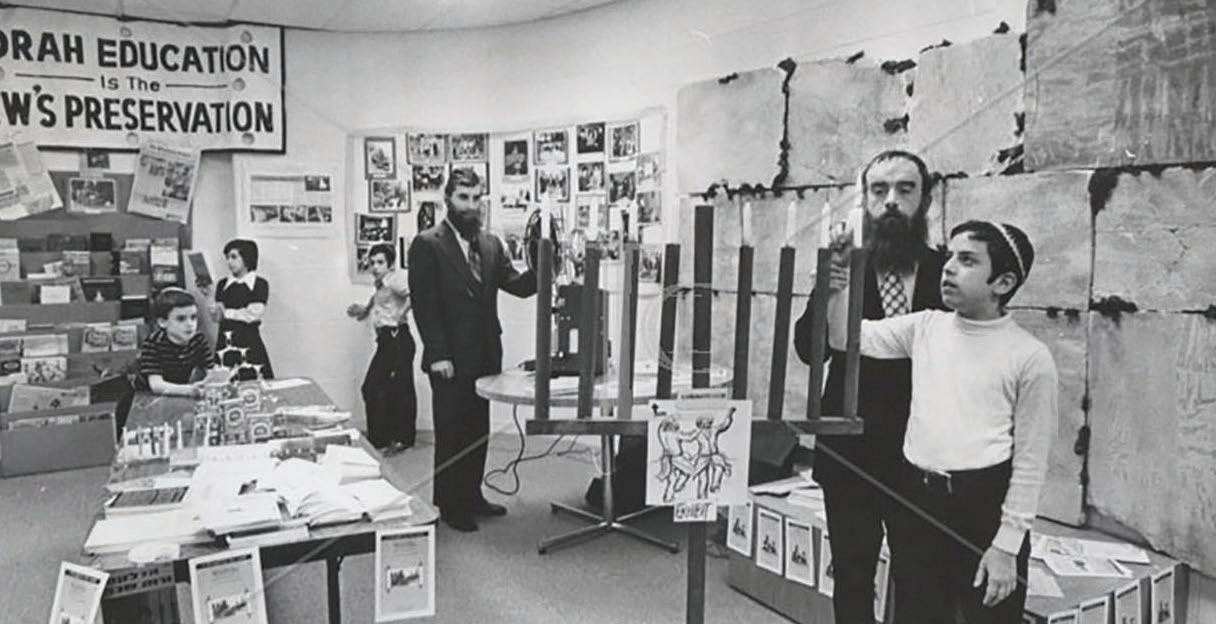
The Rebbe has also charged Rabbi Shemtov with directing Associated Beth Rivkah Girls Schools, the premier Chabad school for girls in Crown Heights with 2,000 students enrolled in preschool through post-high school programs. In addition to directing Camp Gan Israel in Parksville, New York, the first Chabad overnight summer camp for boys and the model for Chabad’s camping network worldwide.
Perhaps the highestprofile responsibility of Rabbi Shemtov has been serving as the Rebbe’s ambassador to D.C. under another organization he chairs, American Friends of Lubavitch. On regular trips to Washington on the Amtrak train, Rabbi Shemtov led Chabad delegations to the White House and played a pivotal role in the relationships
formed between the Rebbe and several U.S. Presidents. Those duties have made the Lubavitcher Center what Yampolsky calls an “epicenter” as it juggles an array of initiatives and special projects in service of the Rebbe, Lubavitch and the Jewish nation.

Yampolsky reminisces, “When I first came to Lubavitch, I knew all the Head Shluchim from nearly every state. One example of how I became so friendly with them happened when Rabbi Shemtov organized a dinner in Washington in honor of the Rebbe. At that time, I used to answer the phone by saying “2 0 3 0” as that was my extension in the office. When Shluchim saw my name tag, they said, and I quote, “So you’re the famous 2 0 3 0!” Throughout the years, when I spoke to them and the secretaries who run their offices, I felt a special bond between us because we know what is going on in Chabad.”
Never a dull day
Yampolsky says that Lubavitch has taught her the importance of fighting for what you believe in. When others may make disparaging remarks about religious Jews in her presence, she defends them. And when she was an activist in the Philadelphia schools, she brought this same devotion to everything she did. As Yampolsky says, “You’re not always going to win the battle,
but at least you can say that you gave your best.”
Eight years ago, Yampolsky brought in Leah Barr, who worked at the preschool in the Lubavitcher Center, to work alongside her in the office. As Barr attests, “When a problem arises, Lois never gives up on solving it and will get to the bottom of it.”
An example of Yampolsky’s ability to solve issues, she tells how Rabbi Shemtov and other Shluchim and employees would get tickets for not “feeding” the meters in front of their parked cars at the Center. “I was driving one say and realized that not church had meters in front of their building,” she recalls. “I called up the Parking Authority and made it a point to say that I hoped it wasn’t discrimination that we had meters in front of our synagogue, which they emphatically denied. Lo and behold, the meters were removed.”
Yampolsky also saved the
Center thousands of dollars over the years on Chanukah. “Before the Menorah lighting, we have a parade of cars with Menorahs on them. We always had a police escort through Center City from Eakins Oval to Independence National Park and would pay for it. I then learned that other parades in town did not have to pay. So I started to investigate and with a little detective work, I was able to correct this situation!”
Yampolsky says that there is not one day in her forty years at Lubavitch “that is a duplicate of another, and where else can you say that about a job?” She says that her job is diversified and challenging and that it gives her endless opportunities to help others. In a single hour, she can find a home for a woman who showed up at the center with four suitcases, speak with a Senator’s office, coordinate a time for a Shluchim conference call, and list the nearby kosher
restaurants for a visiting Rosh Yeshiva.

As she was being interviewed for this article, I got a chance to overhear one of the phone calls that Yampolsky says is a perfect example of the kinds of calls she receives, which she says could “fill a book.”
A man called and said he had three sheep and needed someone to shecht them (prepare them for ritual slaughter). While containing her amusement, Yampolsky thought of someone who could help this individual, and having completed the call, turned to me, enthusiastically declaring, “You can’t make this stuff up!”
When asked what has kept Yampolsky at the Lubavitcher Center so long, she credits it to the love she feels for the Rebbe, Lubavitch itself, their philosophy, dedication, and their strong belief system.
Yampolsky relates, “In 1990, I had the rare opportunity to
meet the Rebbe. I took my younger son Justin (Yaacov Zvi) to meet him and to get a bracha for his bar mitzvah.
I went with Rabbi and Mrs. Shemtov to Brooklyn and when it was my turn, Rabbi Shemtov introduced me. The Rebbe gave us a blessing and a dollar bill which I treasure to this very day. When you looked at the Rebbe, you could tell that he was looking directly at you and no one else. His piercing blue eyes actually spoke to me without words. I will always remember that moment.”
Yampolsky says that there’s another significant reason why she has worked at the Lubavitcher Center for so long, and that is her admiration for Rabbi Shemtov, for whom she feels “extremely honored to work.” She says, “He’s brilliant. There’s nothing he doesn’t know about: Law, the workings of the Stock Market; there’s not a subject he can’t talk about.
He knows multiple languages, has met with Presidents and millionaires and has been written about in countless
publications. It’s mind-blowing what he knows and does and I’m able to witness it all!”
When asked about Yampolsky’s longtime employment at the Lubavitcher Center, Rebbetzin Shemtov said the admiration Yampolsky feels for Rabbi Shemtov and Lubavitch goes both ways. As Rebbetzin Shemov asserts, “For Lois, this isn’t only a job. She does it because she loves the Center and what Rabbi Shemtov and Lubavitch do. Lois doesn’t think twice about it; she does what needs to be done, goes beyond the call of duty, and puts her whole heart and soul into it.”
For originally feeling like a foreigner, Yampolsky has certainly grown to adore the and job. She has become “central to the Center” and well beyond that. It has become so much a part of her for the last forty years that she has vowed never to leave it. “As long as there’s a Lubavitcher Center on Castor Avenue in Northeast Philadelphia, that’s where I intend to stay,” she says emphatically, and there’s no reason to doubt that.
Persistence and perseverance are what has made her successful at her job, and they are lessons she learned from her “boss,” Rabbi Avraham Shemtov.
Master challah baker, Rochie Pinson, has done it again: She’s created a spectacular book to engage the entire family - kids, tweens, and teens, and their parents! - to experience the joy, wonder and satisfaction of baking the most amazing challahs imaginable. Discover challah recipes and challah creations to enhance every Shabbos and Yom Tov, and elevate every special occasion in life into a more magical and memorable event.
Visually stunning, artfully illustrated, and beatuifully photographed, here is a wonderful way to share with a new generation the excitement of baking Challah - the sacred centerpiece of every Jewish table. Plus, you’ll spend enjoyable, meaningful time with family, instilling them with the skills and confidence they will happily carry with them into their own family lives.



Inspiring on every level! Spiritually, emotionally, and aesthetically.
from
Challah Culinary Adventure for




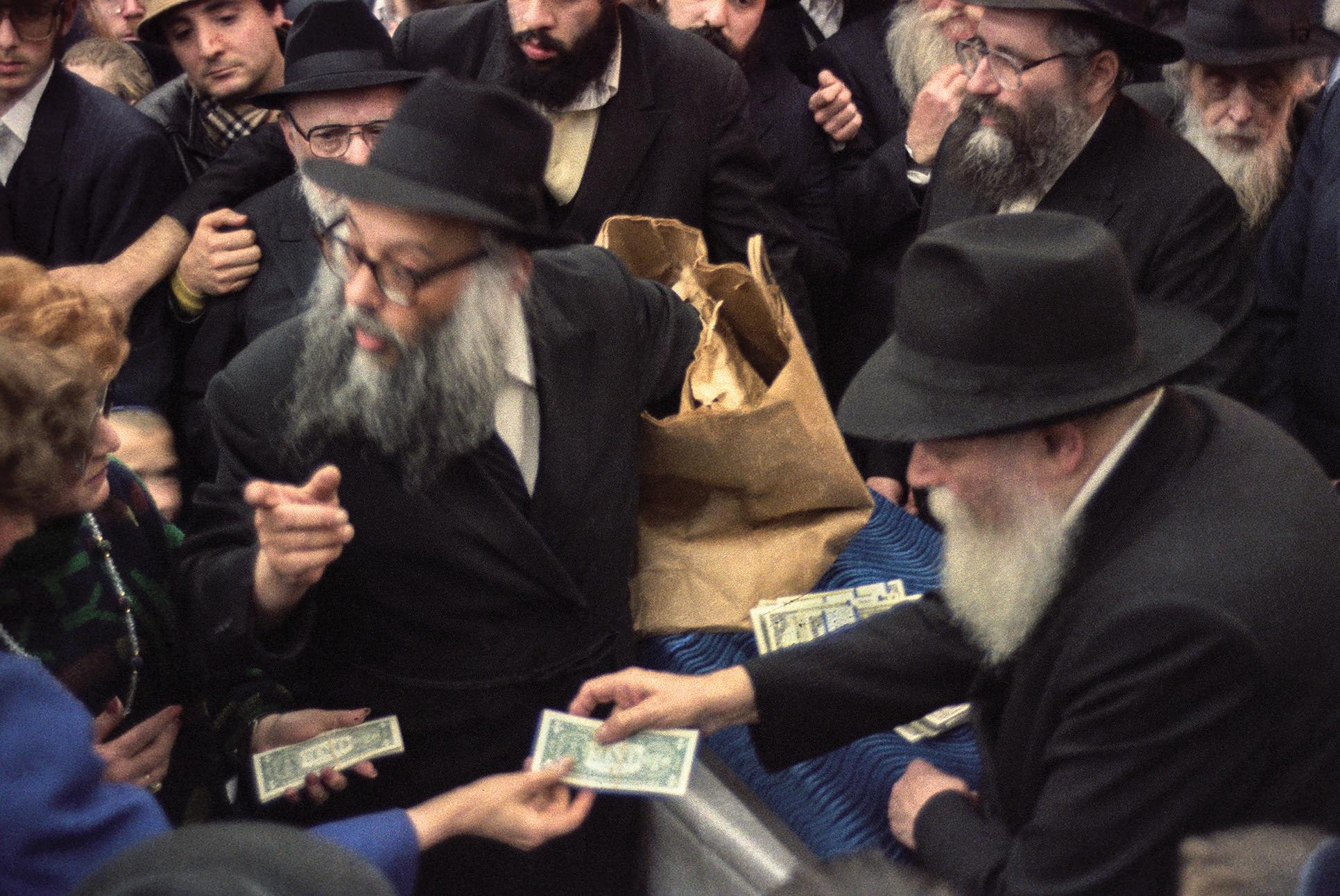

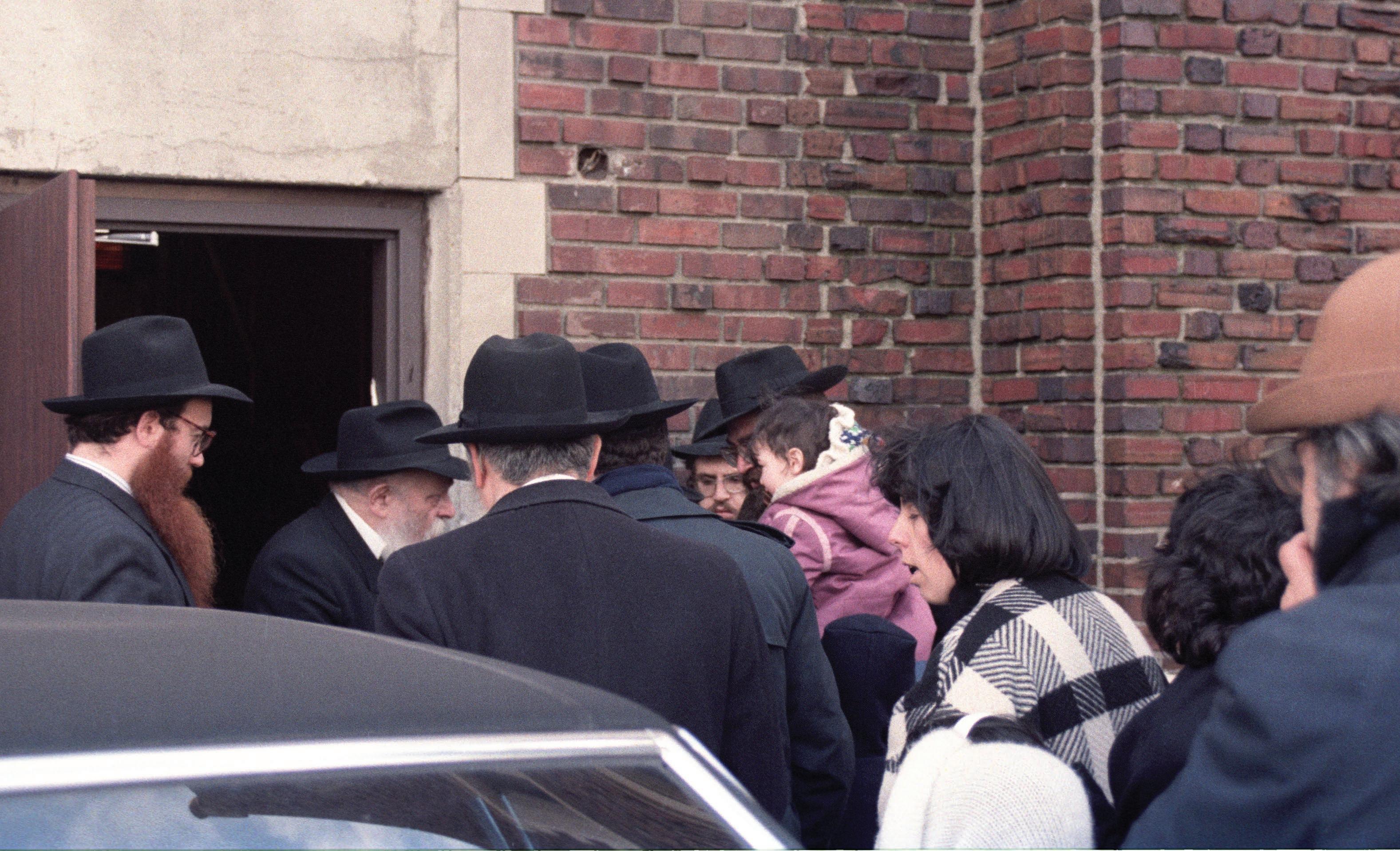


On Thursday night, the 28th of Kislev 5712 (1951), a group of students of the Central Yeshiva Tomchei Tmimim Lubavitch was granted a special audience with the Rebbe. It was a particularly cold night, but those gathered at Lubavitch World Headquarters at 770 Eastern Parkway in Brooklyn, NY, felt warm.

After all, it was the fifth night of the holiday of Chanukah and the Rebbe had invited the students who had been showing up for the early morning studies of Chassidus for a private meeting.
These were the days early in the aftermath of the Holocaust and the devastation of European Jewry. The survivors and Jews worldwide strove to rebuild, but the road ahead was filled with challenges. They would need the young people to step up, to try and fill the shoes of the giants and luminaries that had been lost in the fires of Auschwitz. The Rebbe called on these students to aspire to be the leaders that the generation needed; to be “lamplighters,” as the Rebbe referred to them that night in the spirit of the holiday. He then took a few instructional passages from Gemara (Shabbos 21b and 22b) on how the Menorah is to be lit during the eightday festival, infusing these passages with a spiritual application that would guide these rabbis-to-be in the decades that followed.
Here are those meaningful lessons, according to my understanding:
“The Mitzvah of kindling the Chanukah lights is from sunset,” our sages said. Once darkness descends on the world, we take out our Menorah and shine it bright. “These lights are sacred,” we recite in the lighting prayer. Indeed, these humble flames of truth are meant to project an alternative to the lies, injustice and corruption prevailing in the world. They’re needed more than ever when it is darkest outside. And they are embodied in our positive actions.
instead shared with all. Chanukah is thus celebrated with public Menorahlighting ceremonies and festivities, spreading the holiday’s message far and near.
“It is a Mitzvah to place the Chanukah lamp at the entrance of the house, on the outside,” our sages said. Many religious practices are performed privately. The instruction to shine the light outward teaches us that we are meant to be virtuous in all our interactions— not just those in our home or place of worship. As the biblical commentator Abraham ibn Ezra taught (commentary on Proverbs 3:6), follow G-d “in all of your ways,” including your business dealings. Shine the light out; shine it wherever you go.
“On the first day, one kindles one, and from there on, gradually increases,” our sages instructed. On each night of Chanukah, another candle is added until eight candles are lit on the final night. This practice is a basis for the Jewish rule, “one increases holiness - one does not diminish it” (Gemara Megillah 9b). Spiritual matters should be pursued with a growth mindset, focused on increasing value. Stay put, and you risk being on the decline.
With those lessons, the Rebbe gave blessings to the students and sent them off with Chanukah gelt. He later commented that the above lessons were not limited to these students but applied to every Jewish person, and the Rebbe wished everyone success in their spiritual journey.
These students would go on to form the nucleus of the network of Chabad-Lubavitch rabbis, which today is present in more than 110 countries and territories around the world and numbers 5,646 Shluchim. This year, an estimated 15,000 Chabad-sponsored public Menorahs will shine forth into the dark. As the Rebbe taught, we all can be a light onto others.

“Place the Chanukah lamp within the handbreadth of space adjacent to the entrance ... so that the Chanukah lamp will be on the left and the Mezuzah on the right,” our sages said. The Rebbe said that inspiration should be shared with others and not limited to one specific group —but
- Rabbi Yehuda Ceitlin, Editor of COLlive.com and COLlive Magazine, is the outreach director of Chabad Tucson, and Associate Rabbi of Cong. Young Israel of Tucson, Arizona. He coordinates the annual Yarchei Kallah gathering of Chabad Rabbonim and Roshei Yeshiva.
1. Project an alternative to evil.
2. Be virtuous in all of your dealings.
3. Share the inspiration with others.

After the Second World War, Jewish Polish citizens who survived the war by hiding in forests returned to Poland. There they found their homes destroyed, synagogues burned and their businesses taken over by the government. They were told that their families were all killed or lost in Russian Siberia.
“What were Polish Jews doing in Siberia?” asked my teacher. He then proceeded to give the following explanation:
Early in the war, the GermanRussian Pact gave Polish Jews a choice: to remain Polish citizens under Russian rule or to become new Russian citizens. Those who decided to remain Polish citizens, were quickly sent by the Russian government to the faraway lands of Birobidzhan and Siberia. By being sent away to these faraway lands, they were inadvertently saved. Deep in Russia were many Jews from Poland. When the war ended the Russian government would not allow the Polish Jews to return to their homes.
“I, however, know of one Jew who escaped,” said our teacher.
It is a story of unbelievable proportions.
During the war, there was a group of fighting Polish partisans who had broken out of the Nazi war camps. These partisans consisted of a few Jews and former Polish officers. They organized a resistance force that harassed
the German soldiers.
On one of their missions, an old rabbi was found starving. He had been left for dead by the Nazi murderers. One of the Catholic partisans took mercy on the man and nursed him back to health. The rabbi was of no real use to the group of partisans and was given the job of cooking and praying for the safety of the fighting men. Strangely, for the rest of the war, this group of partisans suffered few or no casualties.
When the war was over, the group broke up. Some returned to Poland; others traveled to Latvia. Many became wandering displaced people with no homeland. The group decided to flee as the Russian government clamped down on freedom.
A plan was made to leave the Russian territories by night. An informant helping the nowescaping partisans told them, “You must cross the river in the winter when it’s iced over. When you reach the other side of the river, you’ll be entering no-man’s land. There you will find a hut. This hut is used by a lone Russian soldier who is in charge of preventing border crossings by all unauthorized people. His job is to shoot at anything moving.
“However, at one o’clock in the morning, he leaves his hut and walks a few miles to the next hut, where he meets another soldier. There the soldiers exchange reports and supplies. Then he returns
to his watch. The complete trip takes him approximately two hours. During the time he is gone, you may warm yourselves in his hut, but you must be out of the hut by the time he returns.”
This group of brave men consisted of younger people. Most of the older people lost hope and remained behind. The only old man willing to travel was the rabbi. There broke out a heated argument. “Let’s leave him,” said one. “After all, he can find food in one of the towns. We really do not need to be slowed down by a frail old man. We have done our share.”
A religious Christian partisan exclaimed, “If we leave him, we are all doomed. I will not leave without him.” Reluctantly they included the rabbi.
It was the most terrible, miserable snowy night that one could imagine. A sudden blizzard broke out. The cold and freezing temperature was unprecedented. Sure enough, the leader was correct. The old man could not keep up with the rigorous climbing and running. The blizzard increased and more than once they had to stop to carry the old rabbi. As light as he was, he now was a big burden, slowing down the entire group. More than once, they argued among themselves to leave him behind.
It was one o’clock in the morning when they observed the hut half buried in the
snow. They could smell the fire and warmth coming from the hut. They waited and waited for the soldier to leave. It seemed like forever.
It wasn’t a moment too soon that the soldier left. Almost frozen to death, the fleeing group fell into the hut, each one trying to get their icy hands and frostbitten feet closer and closer to the fire, but not the old rabbi. He had other plans for the night.
The old rabbi slowly moved away from the group. He opened a small bag and took out an old and rusty Chanukah menorah. Then he took a small piece of string, or cotton, rolled it into a wick and placed it in the old menorah. He proceeded to fill the menorah with some grease or oil that he somehow miraculously had with him in a small tin bottle. The rabbi was now ready to light his Chanukah menorah.
What was taking place put everyone into a trance. Not a word was uttered, nor could a sound be heard. In a spell, everyone watched the rabbi.
In a barely audible voice, the rabbi began the blessings for the lighting of this menorah. Then incredibly, he picked up the lit menorah and placed it by the window of the hut and began to sing Maoz Tzur, a Chanukah poem composed in the thirteenth century. The poem alludes to the miracles performed for the Jewish nation over the centuries.
Suddenly, like an erupting
volcano, the leader jumped out of his stupor and yelled, “Put out the light! You will bring the Russian soldier! Soon we will be caught and shot!”
The rabbi tried to explain that it was the first night of Chanukah and that he had kindled the light in order to keep the commandment of remembering the miracle of Chanukah. “No,” said the rabbi. He would not extinguish the flame. “It must burn onehalf hour. This is according to the ancient Hebrew law.”
Suddenly the door of the hut was flung open. A tall soldier holding a Tommy gun yelled at the startled group to put their hands up into the air.
The Russian soldier approached the old rabbi, looked at the menorah, and said to him in Russian, “I, too, am a Jew. I have not seen a menorah for six years.” He kissed the rabbi’s beard and broke out into tears.
The soldier proceeded to tell the group, “After I left the hut, I suddenly remembered that I had left some reports in a drawer. As I was returning, I saw a light coming from the hut. I couldn’t believe my eyes. There it was, a menorah in the middle of no-man’s land, in the middle of a blizzard right in my hut.”
The soldier told the group that they were safe and proceeded to take out a large bottle of vodka, giving each one a drink. He said, “It’s good that
I was on guard. Another guard would have killed all of you!
Come. I will show you how to cross the border. Remember me, Rabbi. Pray that I, too, have the miracle of Chanukah. I want to leave the army safely and be with my family.”
The very surprised but relieved little group followed the soldier out across the border. Somehow they made it into freedom, and then they all went their separate ways. The old rabbi came to Israel. He told this story to fellow survivors who, in turn, told it to me.
- An excerpt from the second edition of “Crossing the Williamsburg Bridge: Memories of an American Youngster Growing Up With Chassidic Survivors of the Holocaust,” by Rabbi Eli Hecht and published by Xlibris Corporation. Rabbi Hecht, Director of Chabad of South Bay in Lomita, California, is vice–president of the Rabbinical Alliance of America and past–president of the Rabbinical Council of California.
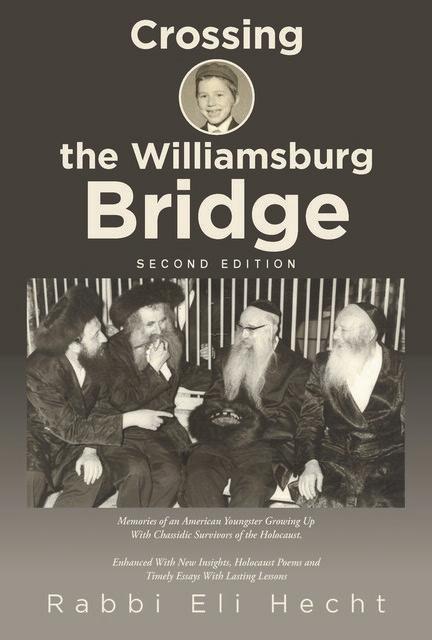














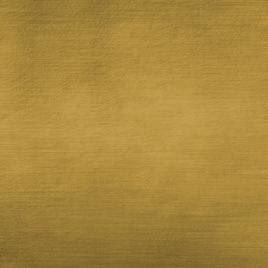
Meet the Chinuch Shluchim is jointly presented by the Menachem Education Foundation (MEF) and COLlive.com Community News Service. The series features Chabad teachers from different states, countries, and demographics speaking about their life and Chinuch Shlichus.
Rabbi Mendel Meyers, a fifth-grade teacher at Cheder Menachem in Los Angeles, California shares how his curiosity and unique hobbies outside of school have made him a better teacher.

Where did you grow up and what are some of your favorite childhood memories?
I grew up in southern California and had a very nature oriented childhood. My mother would often take us on all sorts of camping trips to the Sierra Nevada mountain range, trips
to the beach, and gave us lots of exposure to the outdoors.
Did you always want to be a teacher?
Not even remotely. From a young age I dreamed of opening a Chabad center catering to the absolutely unaffiliated. As a bochur, I was a learning teacher in a summer camp for 13-year-old boys and after that experience I didn’t see myself going into chinuch.
For the first two years of my marriage, we looked for the typical Chabad House position
and soon found a position we thought was ideal - a remote and far-flung place where we would very much be on our own and have to be mechanech our kids from home out of necessity. With that in mind, I signed up for a MEF teacher training seminar to build up my skill set. I quickly found that I enjoyed teaching. I already knew that I enjoyed working with kids - Released Time during my year as a bochur in 770 was a real highlight for me, and now I learned to enjoy teaching them as well.
The Shlichus opportunity we were considering came with the considerable challenges of living in a remote area. While my heart was in that particular small-town-USA Shlichus, we did not receive a clear Bracha from the Rebbe. We then got a phone call from the day school in Buffalo that they were looking for a couple to come out and work in Chinuch full-time.
I spoke to my Mashpia who told me that the Rebbe said if one has a talent in Chinuch they have a responsibility to make that their Shlichus. We decided to go to Buffalo and my teaching career began.
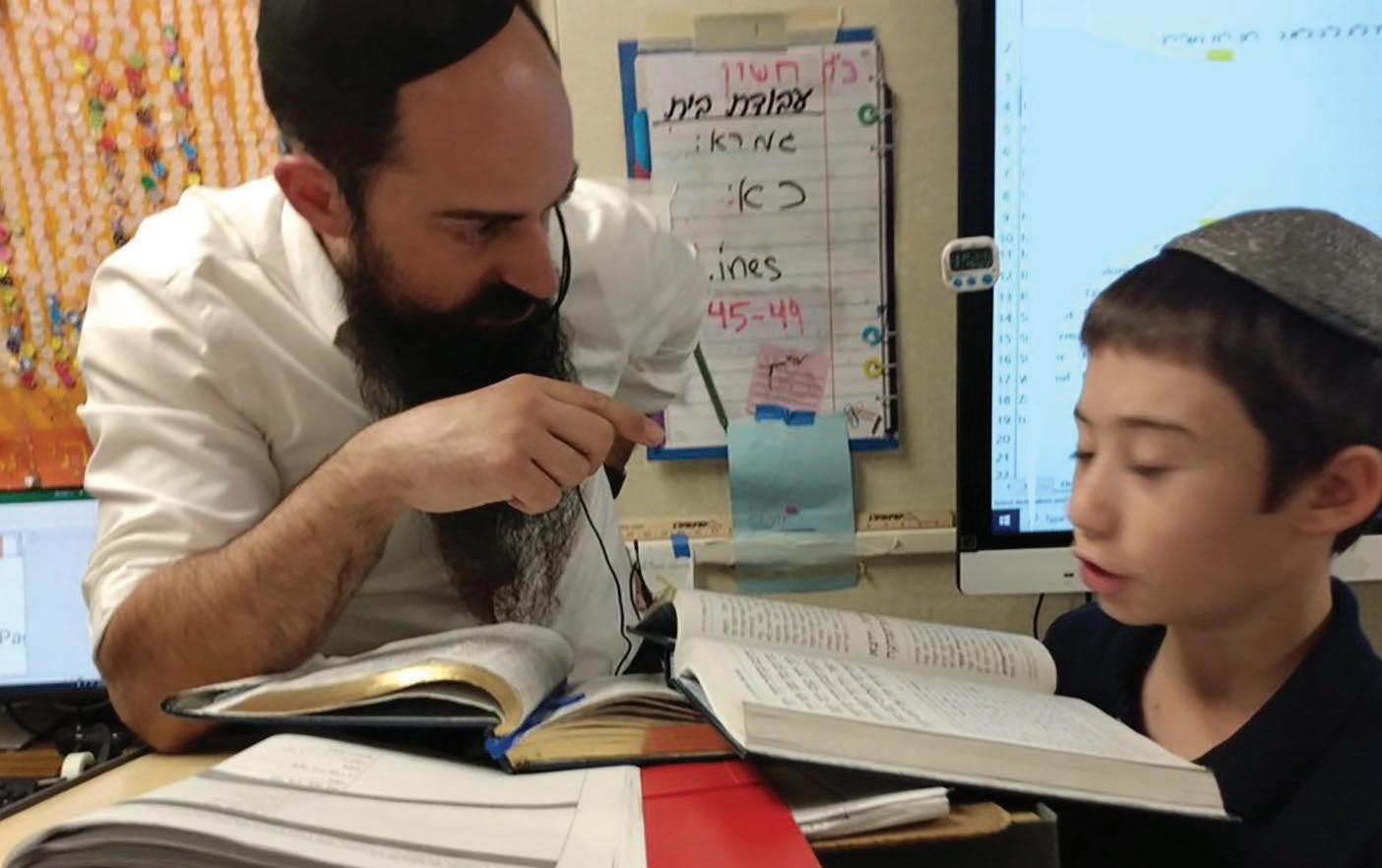
Buffalo is a very sweet and tight-knit community and a great first teaching experience. It is also a city that gets snow six months out of the year. As a teacher I was always
looking for ways to get my students moving, especially during the winter months when we were mostly indoors. We fundraised and got a climbing wall that we spent our next snow days installing. It was fabulous! It allowed children to get moving competitively while interacting with information and learning skills. The wall was so versatile and could easily be used for both physical activity and for educational games, learning, and review activities. Honestly, it was such a fulfilling experience. A mini Gan Eden in Chinuch.
What are your hobbies and interests outside of teaching?
Everything outdoors and active. I love bicycling, starting every day with a 10-mile ride. I go surfing in the Pacific Ocean. Our family enjoys camping and hiking. I love gardening. My kids
and I are raising a vegetable and herb garden, sometimes with surprise plants from our very own compost. I enjoy woodworking, wood burning, and getting creative with items we find in nature. I have a Menorah on my front lawn made out of tree logs that has become quite the conversation piece in the neighborhood and brought many Yidden to our doorstep.
Being in nature can challenge us to get creative and come up with alternative solutions, but most of all, it enables us to marvel at the beauty of Hashem’s world and how gracefully elements come together to form a grand masterpiece. Translating that into the classroom I’ve found that approaching our youth with the same creativity and readiness to adjust to meet
their needs allows for far more success and satisfaction for both teacher and student. Most of all, the attitude that every child is Hashem’s grand masterpiece allows for limitless success and ambition for growth. I also strive to share my outdoor hobbies with my students by taking them on hikes and getting creative


animations, and videos. In addition, I’ve taken on a new role as Director of SEL Curriculum, written by Menachem Education Foundation, and being implemented in Cheder Menachem. These vital lessons introduce essential skills in Social and Emotional Learning to the teachers of
cr lk vag. You must have a mentor-mechanech who can guide and inspire you. When I was starting out, someone recommended that I observe Rabbi Yossi Raskin, a 5thgrade Rebbi in Oholei Torah. I benefited so much from watching him teach and he has coached me many times over the years. There have been times that I’ve faced some rough patches and Rabbi Raskin never turned down my phone calls. He would patiently listen and guide me through the newest challenge in the classroom. Having that mentorship has been invaluable.
Can you share a teaching tip for parents and educators?
with lots of outdoor games. I think there is a lot of value to spending time with your students outside of the formal classroom setting whether in the schoolyard or on an offcampus excursion such as a hike, ballgame, or barbecue.
What app is most used on your phone?
What are your teaching hours?
Contractually, I work 30 classroom hours a week. Realistically, I put in many more hours. I invest vast amounts of time into creating engaging PowerPoints,
younger grades who in turn teach those lessons to their students.
What is your favorite part of teaching?
When a student takes on a leadership role in the classroom. When he can use my PowerPoint and effectively hold the class’s attention and teach the lesson to the class. When classroom routines have become so naturally ingrained in my students that they can study in their own chavrusos and small groups, that is a real feeling of accomplishment. What would you tell someone who is considering making Chinuch their Shlichus?
Be curious. Be as curious as you can about the child’s potential and strengths, as well as the child’s challenges. Parents, be curious about your child’s teacher. Teachers, be curious about what may be going on at home. There is always another layer to what is really going on.
Curiosity is what helps me advance in all my interests both in and out of the classroom. As a life-long learner, when I take my surfboard out to the ocean and see kids half my age effortlessly gliding across the water -- something I’ve never done before – I get curious about it and I learn. Get in touch with the right teacher, the right guidance, and with enough perseverance and siyata dishmaya and you will figure it out.
Believing that you can always grow and never giving up on your personal growth as well as your children’s growth is
essential to success in chinuch.
What do you picture the future of Chabad Chinuch, and how can we best prepare for it?
The Rebbe always encouraged growth, forward movement, and utilization of resources gifted to us by Hashem in our generation.
Our Chabad Houses’ Hebrew Schools place a huge emphasis on making everything colorful, engaging, and jam-packed with content and we need to do the same. The world provides many distractions and we need to counter that with relevant
and engaging lessons and modalities of learning. We need to explore our students’ interests, connect with them and be emotionally present for them.
Yes, we need some oldfashioned sitting in front of a Sefer. No device or modern invention can replace the Sinaic experience of a heiligeh sefer. But we also need to get them moving. Figure out their interests and make learning relevant to them. The leading question in Chinuch should always be “What do my students need?” If we are focusing on their needs, we will get the job done.
Rabbi Avraham Granat of Lubavitch Hebrew Academy in Margate, Florida, on dealing with a terrible loss, his mastery of multiple trades, his role model from Las Vegas, and what recently gave him nachas.

Rabbi Avraham Granat, fourthgrade Limudei Kodesh teacher at the Lubavitch Hebrew Academy (LHA) in Margate, Florida.
Background: Originally from London, my family was traditional and my parents sent my brothers and me to Jewish day schools.
In 1993, we traveled to the U.S. in the summer. While walking down Kingston Avenue in Crown Heights, we heard the “beepers” going off. We followed the rush into 770 Eastern Parkway, and I merited to see the Rebbe and say l’chaim to him on the balcony. After my senior year in high school when my rebbi convinced me to go to a Yeshiva in Eretz Yisroel. It was meant to be for a month, but I ended up staying for two years! After yeshiva, I attended the University of Liverpool in England, where I first tasted Chassidus through the Shliach Rabbi Avremi Kievman.
Family:
My wife and I have 11 children. We lost a baby a few years ago, and Hashem gave my wife and me the strength to keep on with our Shlichus. We have a married daughter and a grandson.
Becoming a teacher: I became a teacher by accident. After finishing Kollel in Morristown in 2001, my only qualifications were that I needed a job, played the guitar and was good at getting kids riled up. We were offered a teaching job at the Desert Torah Academy in Las Vegas. My wife and I were torn about moving there and taking the job because there were positive and negative aspects to consider.
I poured my heart out at the Ohel, and in the tent outside, I opened an Igros Kodesh. The Rebbe’s letter read, “Mazel Tov on your new job in the day school.” I took the job.
Role model: My first six months in Las Vegas were a disaster. The kids walked all over me. Then Rabbi Moishe Rodman, a veteran educator, became the principal. He wanted me to stay and said he saw potential in me. I agreed on the condition that he would teach me how to teach. Rabbi Rodman took me under his wing and I started my real journey to Chinuch. My teaching today is modeled after his influence. He is my
inspiration, and I owe him everything.
Experience:
I’ve been teaching for 22 years and have taught every grade from fourth through eighth. I taught in Las Vegas for 7 years and in Milwaukee for a year. Since 2008, I have been teaching in Florida.
The students:
I love teaching fourth grade because they are like a blank sheet, receptive to what I have to teach. When I started, LHA was a community school
with students from different backgrounds. Since Covid, it’s mostly Lubavitchers because so many people moved to Florida. I have 20 kids this year. It’s the largest class I’ve taught.

My classroom: I would call my classroom organized chaos. My philosophy is to teach the students with the same love and excitement I would like to feel. The kids might not always remember everything I teach, but I want them to walk away feeling that learning is exciting.

Favorite subject: Navi. Everything is relevant, and with all the stories, it is the most exciting. I’m a very lively teacher, jumping around, acting out the stories, and having the kids act them out too.
Special activities: I’m a big proponent of bringing life experiences into Torah. For Pesach, we make bricks, and for Shavuos, we make cheese. We even tried “electrocuting” hot dogs by placing them on a special device that I made. I take my students fishing at the end of the year as one of our field trips.
Changes in Chinuch: Technology has changed the landscape, and the kids have certain expectations. We
have smartboards and use Chromebooks for games. Otherwise, Chinuch is Chinuch. We have beautiful young children to teach and mold into the next generation of Chassidim.
Life outside school: I’m also a mohel, shochet, shatnez tester, eiruv builder, sushi chef, and technology guy. I have ADHD and use that as a strength in everything that I do. My hobbies include fishing and bowling, and I used to compete in bowling tournaments. During Covid, I learned bladesmithing!
Moment
A month ago, I did a bris for the son of one of my first students. It gives so much nachas to see the next
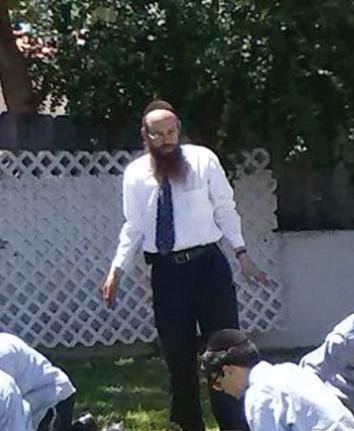
generation of kids.
Message to parents:
Teachers are the most valuable commodity to whom you entrust your children. We have to work together to be successful.
Over the years, I’ve seen that the teachers who don’t make it are the ones who don’t want to be in the classroom. The kids sense it and it creates a negative educational experience for them. As Mechanchim, we are the elite of the Jewish people. It’s not easy and we all go through difficulties, but not everyone is lucky to thank Hashem for “Sheasani mechanech.” The dedication has to be there. It’s a life, not a job.
Rabbi Eily Smith, a principal of the Mesivta at Lubavitch Educational Center (LEC) in Miami, Florida, shares a powerful experience that transformed his teaching, how he tries to instill confidence in his students, and the difference between teaching teenagers versus adults.
Background:
After I got married, I moved to Miami for Kollel under Rabbi
Sholom Ber Lipskar. I was in Kollel for two years and then helped lead a Smicha program and various adult education classes for the community.
When those programs came to an end, I wanted a full time teaching position. In 2009, I cold-called LEC in Miami Beach and offered my services as a teacher. I left a voicemail
saying I was interested in any available position. No one called me back. After a few weeks, the English principal called me, unconnected to my previous call. She told me that someone had mentioned that there was a rabbi looking for a job. She apologized that she didn’t have a position for me in Judaic studies but offered me a job teaching science and social studies to 7th grade boys.
It was not exactly what I was looking for, but a job is a job. That first year I ended up teaching general studies but soon added some Kodesh classes as well, building up to a full time job.
A Switch to Judaics:

LEC as a school and the Miami community as a whole have evolved over the years, and four years ago there was a major switch from a dual curriculum program to one that was full time Kodesh with a dormitory. I took on a position in the administration to help oversee curriculum and student discipline, while also teaching classes.
The transition from teaching adult education to teenagers was an adjustment. I was used to teaching adult students who very much wanted to be there. They paid money, took time out of busy schedules, and even came in from out of
the city to be able to listen. There is a sense of fulfillment in teaching students who are eager to learn.
When I started teaching at the middle school, I was not used to a crowd that didn’t necessarily want to be there. I also did not have much experience dealing with classroom management or behavioral disruptions. I was used to a world where you prepare a lot before the lesson and then give it over. In a 7th grade classroom, you can prepare as much as you want, but the teaching that takes place in the classroom is based on relationships, not just material.
I would compare it to a general dentist versus a pediatric dentist. They both went to dental school, but the pediatric dentist learns an entirely new science when it comes to practical patient
care.
On Which One He Prefers:
I actually started teaching adult education classes again so I am doing both now. I enjoy the variety because it prevents burnout. I get a different satisfaction and fulfillment from each one.
When I first started teaching young boys I was very concerned about classroom management. I was a strict teacher and wanted to be in control of my class. When recess came, the students burst out of the room for freedom. Then one time I went to observe another teacher in a different school and saw the opposite experience. At recess, all the students surrounded him asking how to get involved in various programs he was running, and
engaging in learning related topics in between playing basketball.
I instantly realized I was doing it all wrong.
The next day, I went in and introduced a new reward and incentive program to engage the students. I gave out class jobs, we developed a class currency based on Gemara concepts, and suddenly everyone was involved and was having fun in learning. I saw a tremendous change in my students. I don’t know if they ended up learning more material than they did with my previous teaching methods –
test grades didn’t necessarily change - but they loved Torah a lot more.
In teaching Gemara, we need to ask ourselves “Will our students pursue learning later in life?” That will only happen if learning was a positive experience for them.
I teach Gemara to students who are learning at the basic level and my goal for this level is always to give them a feeling of mastery very quickly. I set up the learning in a simple way
so that every day they feel confident that they know how to learn and understand the material. Whether it is a focus on familiarity with Gemara vocabulary or facilitating Chavrusa learning so they learn the technique of cooperative learning, I try to make the classroom foolproof. By removing the students’ anxiety of inadequacy in the classroom, we can set students up for success. On the other hand, the goal for the more advanced students is to show the complexity and depth of the subjects.
Sometimes during Mesivta applications we are advised not to take a certain student for whatever reason and we accept him anyways. Often that same boy will go on to become a star bochur. There’s a special feeling of nachas in having ignored that advice and giving each boy a chance to shine.
I am always doing some sort of learning to advance my skills in teaching. I try to seek out areas where I feel I could use improvement or an area that is new to me. In the summer I organize a Kollel for teachers from a variety of schools to advance their teaching methods, to share their techniques and prepare for their year.


As the Jewish people commemorate the miraculous victory of the poorly armed Maccabee army, we as therapists are acutely aware of a different uphill battle being fought daily – recovery from addiction – and the modernday miracles being uncovered throughout the process. Here are three lessons we have gleaned from work with those in recovery from addiction that have helped inspire a deeper Chanukah experience:
1. We are not alone in our battles
Those in recovery, like the Maccabees, often feel they are up against a fearsome battle: “The progression of recovery is a continuous uphill journey” (Narcotics Anonymous).
As the staggeringly high relapse rate attests to, the
 Shabtai LCSW and Sony Perlman LMSW
Shabtai LCSW and Sony Perlman LMSW
odds are stacked against these soldiers who are up against an “army” that is large, fierce, and heavily armed. Unprocessed traumas and/ or mental health challenges, difficult life circumstances, deep sense of loneliness and utter hopelessness, the brutal physical cycle of addiction and craving, and the list goes on. According to natural law, the small band of Maccabees should not have defeated the enemy army. Yet their fierce will and dedication, coupled with Divine assistance, carried them into victory against enormous opposition. As expressed in the central Chanukah prayer of Al Hanisim: “[God], in Your abounding mercies, stood by them in the time of their distress. You waged their battles, defended their rights, and avenged the wrong done
to them. You delivered the mighty into the hands of the weak, the many into the hands of the few.”
The central role of Divine assistance, and the hope ignited by this support, is known quite well by those in the recovery battle. In the powerful words of 12-step literature: Sometimes when we pray, a remarkable thing happens: we find the means, ways, and energies to perform tasks far beyond our capacities…The central fact of our lives today is the absolute certainty that our Creator has entered into our hearts and lives in a way which is indeed miraculous. He has commenced to accomplish those things for us which we could never do by ourselves.
Recognizing the need to turn to and rely on “something greater than ourselves” is
seen as the foundation of one’s power and fuel. When someone struggling with addiction internalizes the message that there is someone in their corner waging this battle together with them, they too, are able to move forward through this fight: “We admitted we couldn’t lick alcohol with our own remaining resources, and so we accepted the further fact that dependence upon a Higher Power could do this impossible job.”
Through the Menorah lights, those confronting, loving, or treating individuals battling substance use are reminded that despite the darkness, despite the force and might of the battle being confronted, there is hope, as this is a journey that one does not fight alone.
The Menorah is lit at night as darkness descends. It is in darkness that light is given its function and meaning. The Lubavitcher Rebbe famously encouraged Netanyahu before entering into a difficult political challenge with words that he held in mind until today, “Remember that in a hall of perfect darkness, if you light one small candle, its precious light will be seen from afar, by everyone.”
Working with those in addiction recovery, we continually experience the impact that can be made

with but one spark of light among darkness: Alex* had come into residential treatment after battling addiction and depression. Sitting in a group among other Jewish clients, he shared with tears in eyes: “Since my bar-mitzvah I have not thought much about what Judaism means to me. I feel now like I am searching for something but not sure what it is. When I saw there were other Jews here I realized that this connection is something I have been missing. Last night for the first time in years I said the Shema and felt something deep within turn on. Like this piece of me that has been covered up.”
This one small spark of Judaism stirred up the “pintele yid” (Jewish spark) whose light had not diminished, despite being
concealed. The one small untainted sealed bottle of oil, that deep connection that is pure and authentic, is there if only we search for it.
Addiction is often a profoundly dark period filled with loneliness and despair. Yet, it is this very darkness that often becomes a powerful motivation for spiritual, emotional, and psychological growth. It is for this reason that those fighting for sustained recovery bring with them a light so beautiful and one that is palpable and contagious to those around them.
3. An ongoing cycle starts with the first step One particularly meaningful custom is that rather than lighting all eight candles at once, they are lit in ascending order. On the first night, we light just one flame. On the second night, an additional flame is lit. By the eighth night of Chanukah, all eight lights are kindled.
The miracle of Chanukah is testament to the positive momentum that can be built when just one step forward is taken.
On Chanukah, the Jewish people’s faith and hope in spite of the darkness that surrounded them was perhaps the greatest miracle of all. Even in the face of looming threat, and though it seemed defeat was inevitable, the Macabee army acted on
their hope and faith.
Recovery involves making a first move. In the language of the 12-step program, it is the initial willingness to “turn our will over.” Or, similarly, that first decision to enter treatment. Making the decision to illuminate that spark of light- of hope for change and a step into the direction of healing- can trigger a continuous cycle.
Someone in the depths of despair entrapped by addiction has often lost the belief that there is hope for any form of progress let alone surmounting this battle. Once a small spark of hope is ignited- a spark of belief that I am worthy of love and
Being and a group of others who I can turn to for supportspace is carved for deeper and deeper light to penetrate. When that first belief comes in and lets in even the smallest light it ignites willingness, and willingness breeds openness to change and transformation. The recovery process begins not with the big leap, but by taking a first step.
Once this momentum is triggered, cycles of darkness can not only be dispelled, but transformed and transmuted into deeper meaning, purpose, and wisdom. This is the “gift of desperation” spoken about often in recovery. People often are not able to truly get better until they are so deep in the
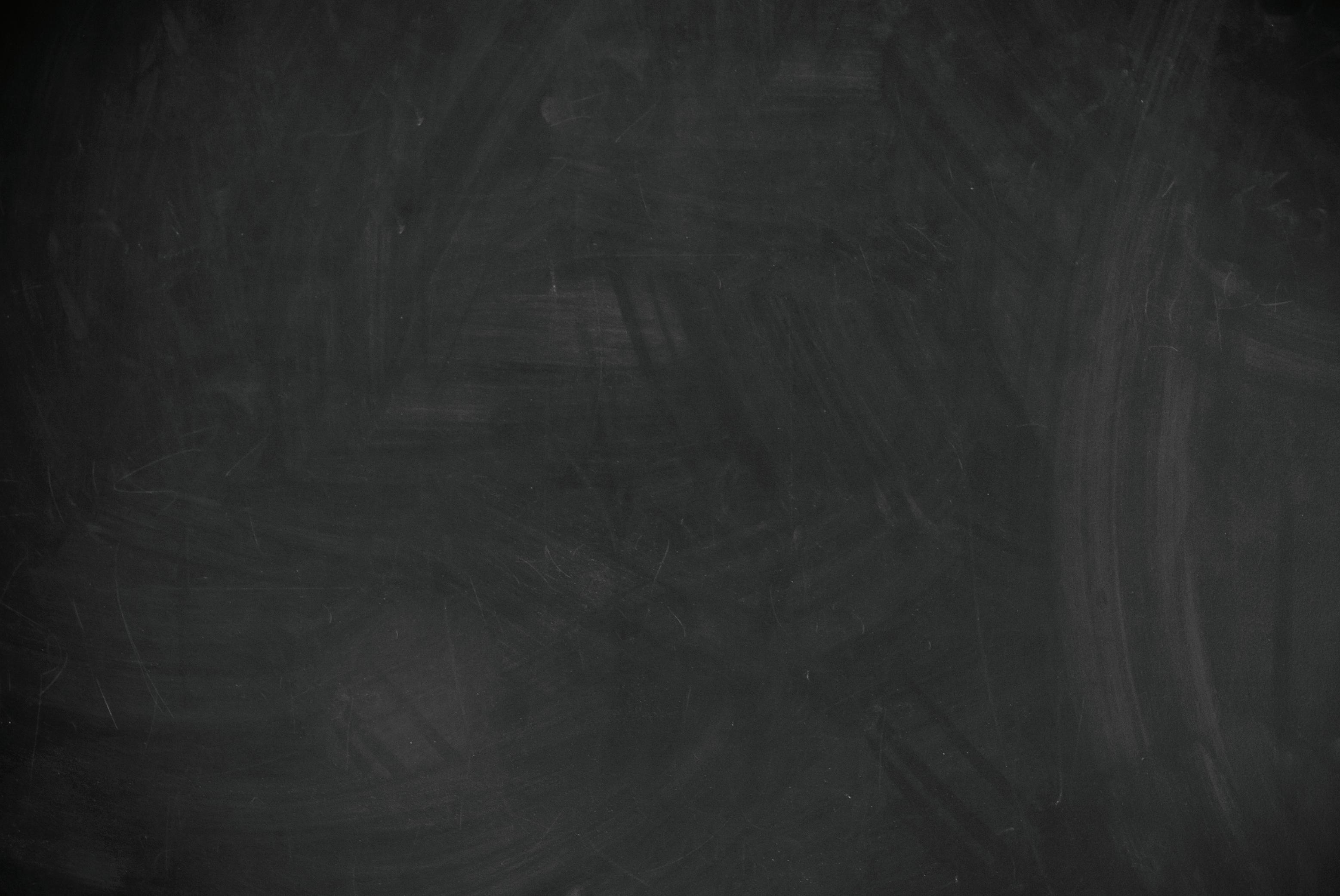
but to come out and look for the light. They are, literally, forced to grow. It is for this reason that great people so often have a troubled past. In the poignant words of Victor Frankl, “everything that gives light must be burned.”
On Chanukah let us be inspired by the everyday ‘Maccabees’ valiantly waging the recovery battle, and know that in our own battles, we possess unthinkable strength that comes when we realize we are not fighting alone. And that it is often through darkness that our inextinguishable light can be found.
*Name changed

Our outdoor party space offers a modern fresh Mediterranean feel. The space is fully covered with a clear roof through which you can see the bright sky or stary night and has cozy wooden deck floors. Our unique party space has full climate control for your convenience and offers an experience like no other in Brooklyn.

Sub-Zero, the preservation specialist. Wolf, the cooking specialist. Cove, the dishwashing specialist. Find them exclusively at your local kitchen specialist.

Drimmers Appliances 1608 Coney Island Ave, Brooklyn NY 718-338-3500
Monday—Thursday: 9am – 6pm
Fridays: 9am – 1pm
Saturdays: CLOSED Sundays: 10am – 6pm
Drimmers MCKB 41 W. 25th Street, New York, NY 212-995-0500

Monday—Thursday: 10:30am – 6:30pm


Fridays: 10am – 1pm
Saturdays: CLOSED Sundays: 11am – 5pm
From kiddush cups to candlesticks, and menorahs to megillah cases, Elite Sterling has it all. Now in business for nearly 35 years, Elite has serviced generations of clients and its sterling reputation counts for more than just a good pun.
Elite is managed and owned by Gadi Blizinsky of Crown Heights, but the story behind the business begins in the holy land of Israel.
Gadi’s uncle, Yitzchak Ofner, was a manufacturer of silver Judaica and that’s where Menachem Blizinsky, Gadi’s father, got the idea to replicate the model in the United States. After receiving a blessing from the Lubavitcher Rebbe for the new business, Elite opened its store on Kingston Avenue in late 1989. The business scaled quickly. Just a year and a half later, a second branch was opened in Boro Park to

cater to the sizeable frum community there.
Many of the stunning pieces found on Elite’s showcases are designed and manufactured by Elite themselves. This helps to ensure that their products are of the highest quality while keeping prices low by avoiding any middlemen. Gadi points out that keeping his products affordable can be challenging. Silver prices fluctuate drastically, and when prices are high, it is difficult to avoid passing the higher price on to the consumer. Still, Gadi says he tries his best to make the luxury of silverware one that is accessible to everyone, even those on a tighter budget.
Gadi is passionate about his work and its complexities, but he manages to explain the process in a simple way.
“The first step,” he says, “is to source pure, unadulterated silver. Typically, the silver
comes in the form of beads which are then turned into sheets of silver. These sheets are sent to an artist, usually based out of Israel or Italy, who shapes them into the final product. Due to the intricate nature of the work and its expensive material, they are made almost entirely by hand by highly trained experts with years of experience in the field.”
For a time, silver Judaica seemed to be losing its appeal with the younger generation who weren’t attracted to the styles of the past. Gadi and his team realized it was time to change things by introducing more modern-looking pieces alongside the traditional, classic-style silver. “Today, people prefer cleaner and brighter-looking silverware and we have adjusted our designs to cater to that demand,” he says.


Elite is often the first stop for families celebrating a simcha, which is what Gadi enjoys most about his work. “I am so thankful to have a business that is connected with joyous and happy occasions,” said Gadi. “It is truly special to be a part of so many simchas.”
After decades in the business, Gadi now sees children and grandchildren of his clients visiting his store before weddings, bar-mitzvahs and other occasions. “Our goal has always been to provide quality silverware at an affordable price. With Hashem’s help, we have been able to do so, and our customers recognize that and keep coming back.”

When the e-commerce world began to boom, Elite opened an online store and currently attracts customers worldwide.
Elite’s services are also sought out by individuals and communities looking to
create customized silver Judaica. They recently produced a larger version of the famous crown that adorns the “Rebbe’s Sefer Torah” at 770 Eastern Parkway for the 36 Sifrei Torah completed at this year’s International Kinus Hashluchim. On one occasion, a wealthy individual hired them to create a small Aron Kodesh made entirely from silver for the Sefer Torah he keeps in his home. Currently, they are in the midst of a significant project for a Chassidic community to create a wall Menorah that will replicate the Shul in the old country where their dynasty originated.

No task is too small for the Elite team, and they are proud of their well-earned reputation for expert craftsmanship. “The
success of our company is really thanks to each and every member of our incredible staff,” said Gadi. “From Chani’s keen eye for attractive styles to Hirsch in the management department and Nechama at customer care, our team keeps our company thriving.”
For Lubavitchers, the Menorahs produced by Elite

Sterling have a special appeal. Throughout much of Jewish history, it was assumed that the Menorah of the Beis Hamikdash had rounded branches. The Lubavitcher Rebbe, based on the drawing of the Rambam, insisted that this long-held assumption was misguided and that the branches of the Menorah were actually straight and extending diagonally. In light of this, many prefer to buy Menorahs with straight branches.
When Gadi and Chani Blizinsky started their business, it was rare to find a silver manufacturer that produced straight-branched menorahs; ironically, they were actually more difficult to create. Gadi says it took much convincing to get the manufacturers on board to start producing such Menorahs. Even today, Elite Sterling carries one of the largest selections of straightbranched silver Menorahs in the U.S. market.
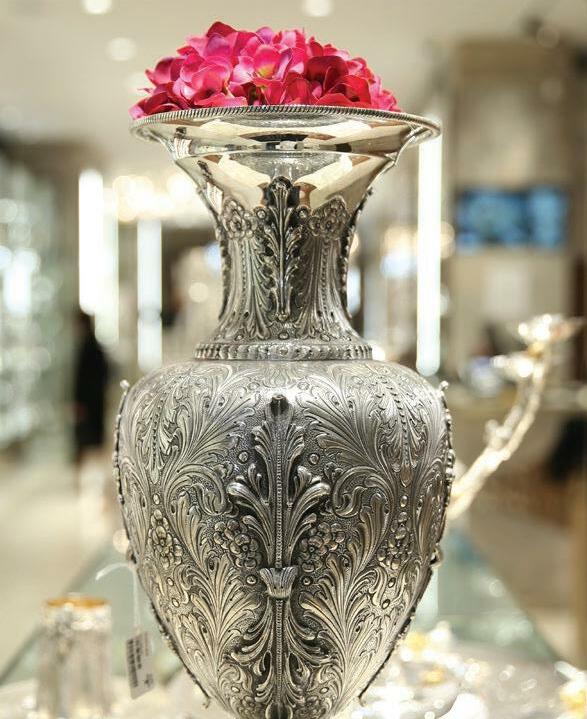


Elite Sterling is widely admired in the world of Judaica and their products can be seen gleaming in homes and at Shabbos tables around the globe. Their popular branch in Boro Park was recently beautifully renovated and similar plans to renovate the Crown Heights store are being finalized. As the frum community continues to flourish, there is no doubt that Elite will continue to shine along with them.
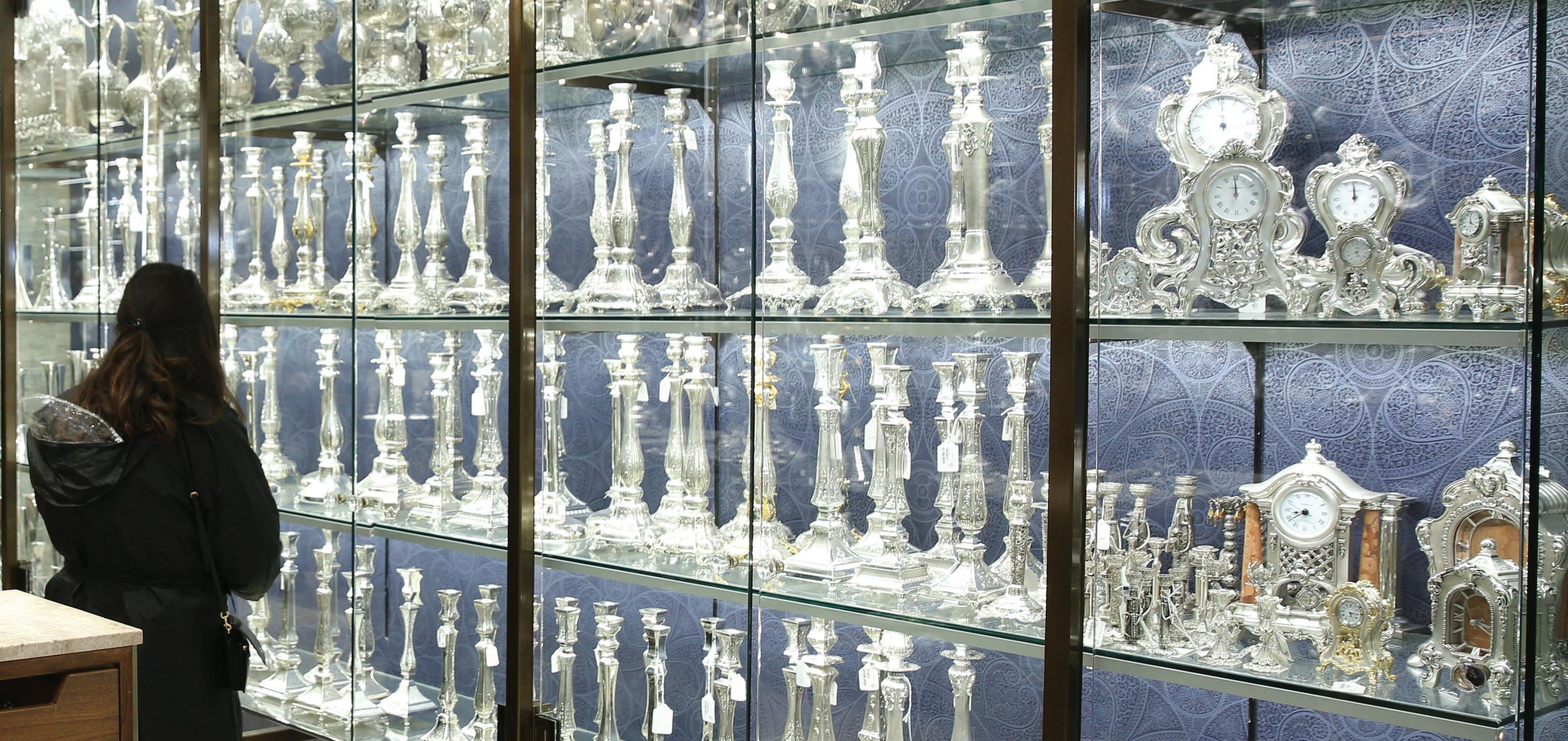
 By Rochie Pinson
By Rochie Pinson


Eating deep fried food on Chanukah reminds us of the miracle of the oil in the Menorah, which is a great excuse to eat doughnuts! Here’s an original take on the traditional sufganiyot, (hebrew for doughnuts), using a classic challah dough!


• Oil, for frying (such as canola or peanut)
• 32 oz Classic Challah dough (use your own recipe - or try Rochie’s Classic Challah recipe for the best dough of your life!)
• Confectioners’ sugar, for sprinkling

Serve with: Jelly and/or custard
21Roll dough into a large (roughly 6x18-inch) rectangle, about ½-inch thick. Using a pizza cutter, cut dough into 1-inch wide strips. Heat oil halfway in a medium pot over high heat. You’ll know it’s ready when a small piece of dough inserted into the oil begins to sizzle.



3You’re ready to start frying! Prepare a wire cooling rack, or line a tray with paper towels. Deep fry the dough strips for 6-8 seconds on each side. Don’t crowd the pot — there should be plenty of room for all the strips to float to the top. Carefully remove from oil using a slotted spoon or tongs.
Drain on the prepared cooling rack. Dust with confectioners’ sugar while still warm. Serve with jelly or custard.


Yields 6-8 Challahs
4¾ cups warm water
1½ cups sugar
7 tsp yeast
1 cup oil
2 eggs, beaten
2 tsp vanilla extract
2½ Tbsp fine sea salt
13-15 cups all-purpose flour (approximately a 5 lb bag)
Glaze:
1 egg yolk, beaten with 2 tsp water
DIRECTIONS:
1. Pour the warm water into a bowl. Add the sugar and yeast; stir to combine.
2. Add the oil, eggs, and vanilla; stir well.
3. Add the salt and 13 cups flour, adding the remaining flour as needed until the dough pulls away from the sides of the bowl.
4. Knead until smooth and elastic. Put a bit of oil in the challah bowl and roll the dough around in it. Cover the bowl, and let rise in a warm spot for 2-3 hours, or overnight in the fridge.
5. When the dough is puffy, punch it down to let out the air. Then do the challah separation with the blessing.
6. Braid, then glaze with egg, and top with your favorite toppings.
7. Allow to rise for another 1-1½ hours, then bake in a 350°F oven for 30 minutes.
Rochie Pinson is a shlucha in downtown brooklyn, and is the bestselling author of “Rising! The Book of Challah” (Feldheim 2017) and her newest cookbook “The KIDS Book of Challah: Challah Adventures for the Whole Family” (Feldheim 2022). They are both available on Amazon and at Jewish bookstores everywhere. Pick up a copy (or 3) for the most amazing Chanukah gifts. Rochie travels, nationally and internationally, to spread her message about the power of the Jewish woman, and to teach women the art of challah. She has inspired thousands of women to bring the mitzvah of challah into their lives in a positive and joyful way.
Follow @rochiepinson on Instagram and Facebook to discover endless ways to create with challah dough, as well as Torah insights connected to each challah and parsha.


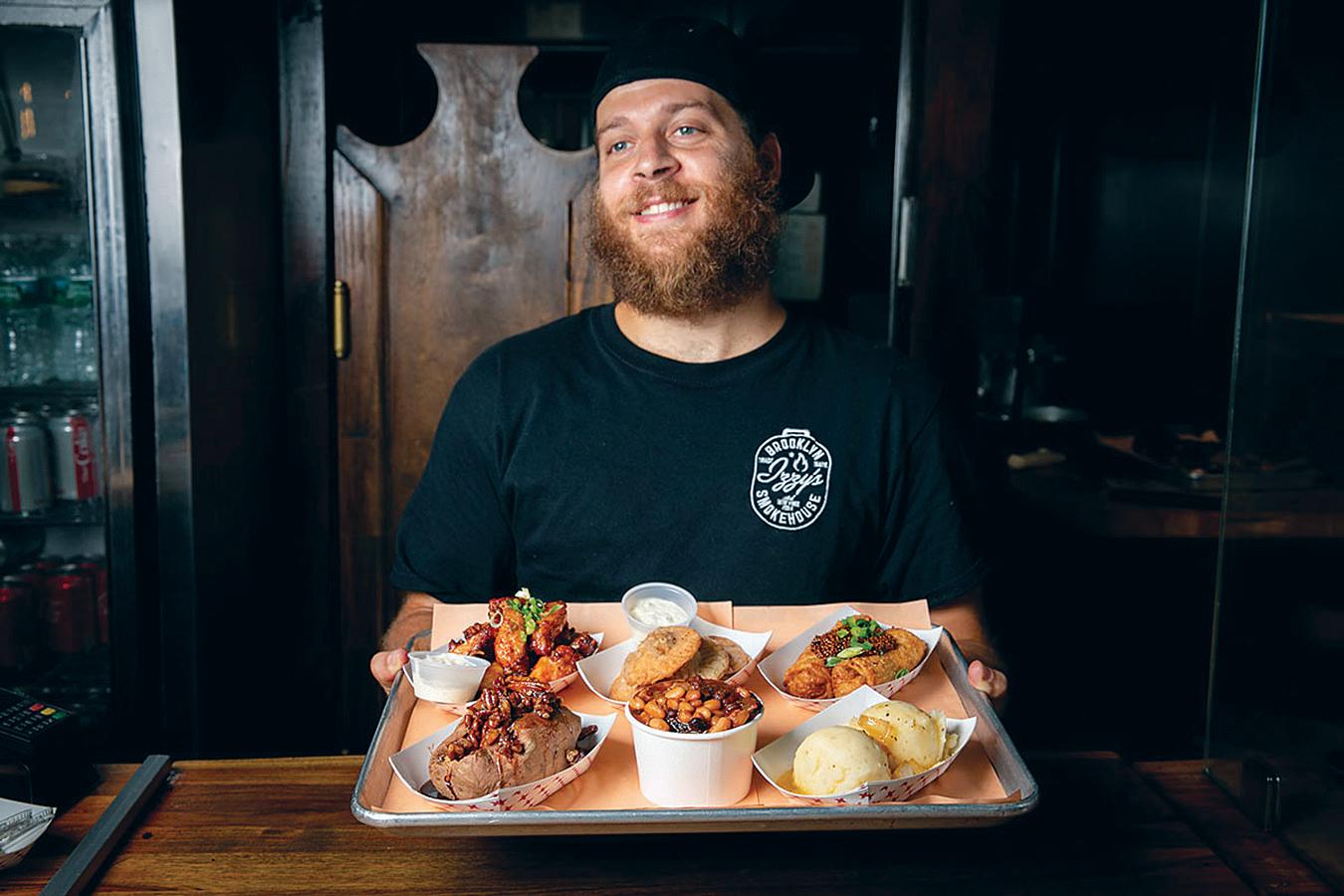


 BY NINA SAFAR OF @KOSHERINTHEKITCH
BY NINA SAFAR OF @KOSHERINTHEKITCH
Chanukah is the festival of lights—and all things fried and dusted with sugar. Much like children who wait for the holidays to unwrap presents, I eagerly anticipate this holiday so I can indulge in powdered jelly donuts and fried potato latkes.
When it comes to celebrating Chanukah, I like to think of everyone’s favorite fried food—latkes—and the exciting nontraditional ways to eat them. Whenever I’m trying to give the basic latke a makeover, I think of other potato dishes, like french fries or baked potatoes. What do I enjoy topping those with, and would it work with a latke? The answer is usually YES! I’ve served “nacho” latkes with a creamy Cheddar sauce, poutine-inspired latkes with gravy, and even grilledcheese latkes. To make your own creative latke recipes, think of your go-to comfort dishes, then use the components as toppings or fillings for a delicious latke. I am sharing some of my favorite non traditional ways to eat a latke.
Nina Safar is a cookbook author and the food blogger behind @kosherinthekitch www.kosherinthekitch.com. Stressed about meal planning? Browse the site for deliciously easy dinner ideas and cooking inspiration. Follow her on Instagram for more fun foodie ideas.
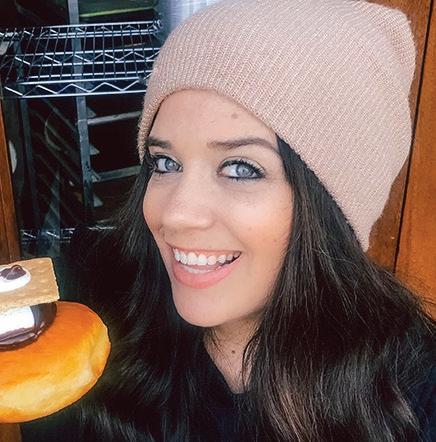
This hack for making latkes is super easy (no frying needed!) and creates a fun and tasty way to serve latkes for a crowd. I use my latke hack, frozen hash browns, to shorten time on this recipe. You can swap out the frozen hash browns for shredded potatoes if desired.
for Waffle Latkes:
1 bag (30oz) Hash browns (defrosted)
2 eggs
2 tablespoons flour
Salt to taste
Black Pepper to taste
INGREDIENTS for topping for board:
All of your favorite brunch ingredients to assemble the brunch board. Some items to include but not limited to, flaked salmon, lox, cream cheese, hummus, capers, pickles, olives, guacamole, butter, sour cream, ketchup, hot sauce etc…

1. Place defrosted hash browns in a large mixing bowl.
2. Add eggs and flour and season with salt and pepper. Combine well.
3. Spray a waffle maker with oil then scoop about 1/4 cup (I use an ice cream scooper to measure out the perfect amount) and heat up batter until edges are golden brown.
4. Place cooked waffle latkes on a large serving platter and surround with brunch board ingredients.
For the Cheddar Stuffed Latke Balls
1 6oz. package potato pancake mix
5 large eggs
2 1/4 cups water
1 8oz. block of cheddar, cut into small cubes
2 cups corn flake crumbs
For
1 container of cherry tomatoes
Salt & Pepper to taste
2 tablespoons olive oil
1 small yellow onion, diced
2 cloves of garlic, diced
1 can of diced fire roasted tomatoes (14.5oz)
3 cups of Vegetable Broth
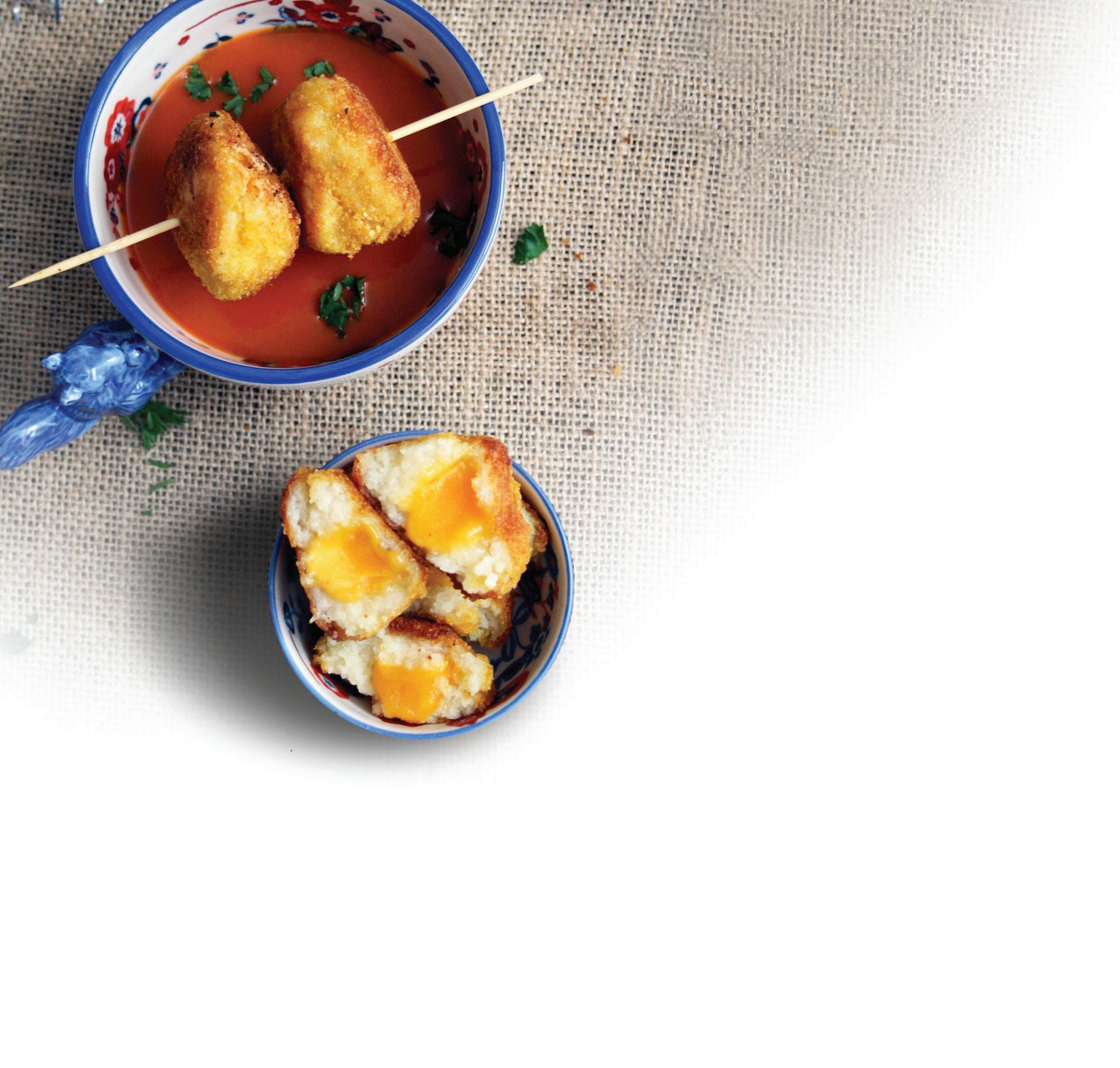
This here is my take on the classic comfort food combo of grilled cheese and soup, Chanukah edition! Crispy latke balls stuffed with creamy cheddar cheese served over savory roasted tomato soup.
For the Cheddar Stuffed Latke Balls:
Beat 2 eggs then combine with water and add contents of potato pancake mix. Allow batter to thicken. Place in fridge for an additional 10 minutes to further thicken. Scoop out about 1 tablespoon of batter then place in your hand and stuff a small cube of cheddar in the center, rolling the batter around to form a ball. Dip in eggs then corn flake crumbs and fry until golden brown on all sides. Skewer together several latke balls then serve over tomato soup.
For Tomato Soup:
Place cherry tomatoes on a baking pan. Drizzle 1 tablespoon olive oil over the tomatoes and season with salt and pepper. Coat well. Place in oven on 400′ for 30-35 minutes until beginning to brown. Once the tomatoes are roasted, saute onions and garlic with remaining olive oil. Once golden, add the broiled tomatoes and allow to cook for 2 minutes. Add the canned tomatoes and mix well. Allow to cook for 2 minutes. Add the broth and bring to a boil then reduce heat and simmer for 30 minutes. Puree with an immersion blender and serve with cheddar stuffed latke balls.
Spice up the original potato latke this holiday! Skewer bite sized potato latkes together with a layer of creamy cheese nacho sauce served on top.
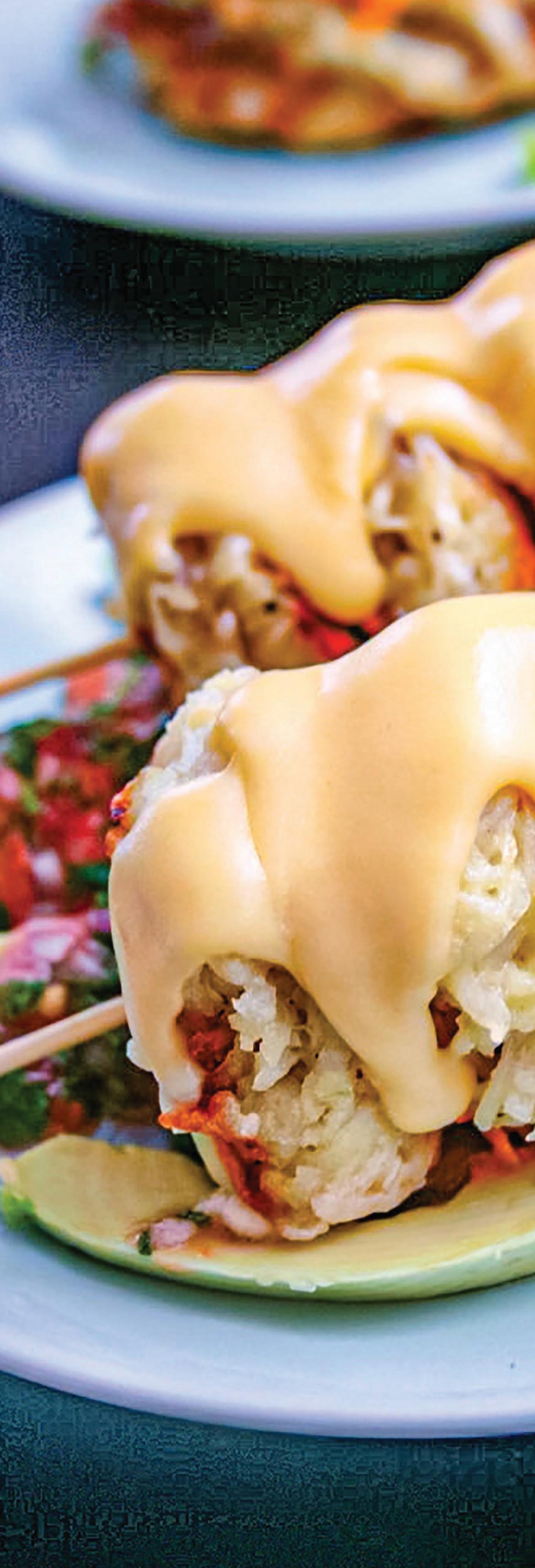
Potato Latkes:
4 cups shredded potatoes (1 lb)
1 small onion, chopped 2 eggs
3 tablespoons scallions, chopped 2 tablespoons flour
1 teaspoon salt 1/4 teaspoon black pepper
Nacho Sauce: 2 tablespoons butter 2 tablespoons flour
1 cup milk
1 cup shredded cheddar cheese
DIRECTIONS:
Melt butter then add flour and whisk together until well combined and a paste forms. Add milk and over a medium flame whisk until sauce thickens then add shredded cheese and continue whisking until cheese melts and sauce is smooth.
Salsa:
4 tomatoes
1 bunch of cilantro
1 red onion
Juice of 1 lime
Pulse together in a processor until smooth. Optional, add 2 jalapeno peppers without seeds for spice! Plate latke skewers over sliced avocado and salsa with nacho sauce on top.

INGREDIENTS:
1 16 oz. bag of frozen hashed browns, thawed
2 eggs
3/4 cup pure pumpkin puree (not pumpkin pie)
1/4 teaspoon black pepper
1/4 teaspoon salt
1/4 teaspoon ground coriander
1/4 teaspoon ground nutmeg
1/4 cup chopped chives (optional)
DIRECTIONS :
Combine hashbrowns and pumpkin. Season with salt, pepper, coriander and nutmeg. Heat up a large non stick frying pan with oil over medium heat. Using 1 tablespoon measuring spoon, scoop out batter and cook in batches until golden brown, about 3 – 4 minutes each side. Serve with chopped chives.

This Chanukah, surprise your family by creating a holiday latke out of their favorite weekday dish. Schnitzel is a weekly must on my dinner menu. By coating it in a latke batter then frying to crispy perfection, it is now a holiday favorite as well.
INGREDIENTS:
16 oz (1lb) frozen hashed browns (defrosted)
4 eggs
2 tablespoons flour plus 1 cup
1 lb. boneless skinless chicken cut into pieces
Spicy mayo for serving (optional)
Combine hashed browns, eggs and 2 tablespoons flour, creating latke mixture. Dredge chicken in flour then dip in latke mixture (using your hands to coat the chicken with the potato batter) Heat a large frying pan with oil then fry chicken pieces until crispy on both sides. Optional, serve with spicy mayo. To create spicy mayo combine mayonnaise with sriracha sauce.
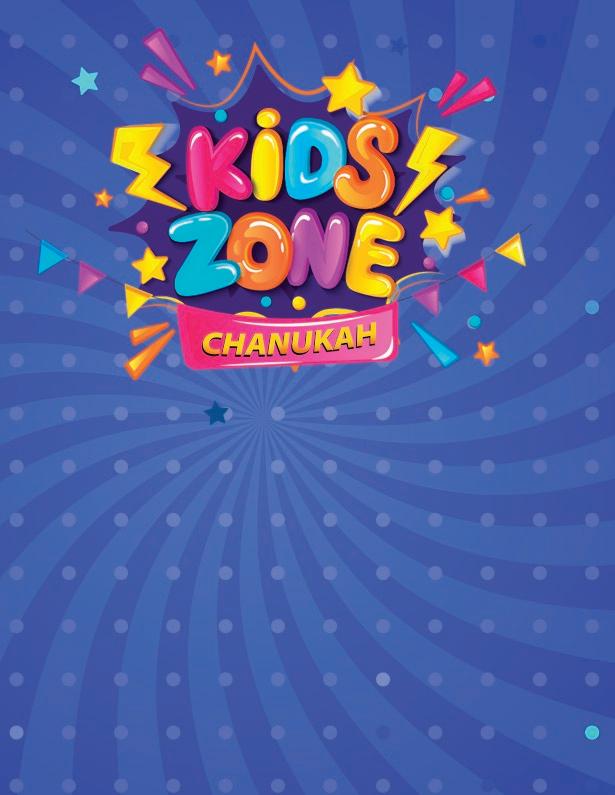




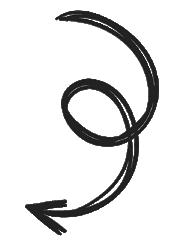











Most are familiar with the booktheft scandal that rocked the Chabad-Lubavitch community to its foundations in 5747 (1987). And, many are aware of the subsequent celebration commemorated on Hei Teves every year since. But fewer people are familiar with the address the books were stolen from - 766 Eastern Parkway.
Constructed in a neo-Jacobean architecture style, the building was built in 1920. It has 2,990 square feet, three floors, and a basement. The property, between Kingston and Brooklyn avenues, was owned by a Jewish dentist named Dr. Jacob Shapiro. Shapiro lived upstairs and his practice was on the ground floor. The red-brick building with the 3-pointed roof next door at 770 Eastern Parkway was purchased in 1940 by Agudas Chasidei Chabad to serve as the residence of the 6th Lubavitcher Rebbe, known as the Frierdiker Rebbe or Rebbe Rayatz, and headquarters of Chabad-Lubavitch. While in Europe, the Frierdiker Rebbe inherited a sizable collection from his predecessors and established a library with 5,000-10,000 volumes. He arrived in the United States carrying the few books and writings he managed to fit in a suitcase, including the Baal Shem Tov’s precious Siddur. His library was shipped to New York shortly after and kept in the basement of 770.

A second library was assembled by the Frierdiker Rebbe’s son-in-law and future successor, Rabbi Menachem M. Schneerson. It was originally stored in 770 but when space was no longer available, the Rebbe purchased the 766 building on January 26, 1966, to store additional volumes. The libraries were kept separate.
In 1985, rare volumes were disappearing from the Frierdiker Rebbe’s library at 770. The culprit turned out to be none other than Barry Gurary, his only grandson. Gurary claimed the rare books and manuscripts he’d been selling for thousands of
dollars were the family’s and not the movement’s property. Refusing to appear in front of a Beis Din, Gurary was taken to court. On the fifth of Teves 5747 (1987), following a 23-day trial, a New York judge issued a ruling that the books were indeed the property of the Chassidim and the Chabad movement as a whole.
The Rebbe’s library and the Frierdiker Rebbe’s library were then combined into one gigantic library, spanning across parts of 770, 766 and 760 Eastern Parkway, owned by the three umbrella organizations of the movement - Agudas Chasidei Chabad, Merkos and Machne Israel, respectively. These three buildings are home to 300,000 rare and old books dating back to the 14th century, manuscripts and precious artifacts. The second and third floors of 770 contain part of the library, as well as the basement of 770, extending underneath the front yard where the Rebbe’s sukkah stands. A bridge above and a tunnel underneath the courtyard between 770 and 766 connect both buildings with 760.
After the Rebbe’s heart attack in 1977, the walk between the Rebbe’s home on President Street
and his office at 770 became increasingly difficult for him. Starting in 1981, the Rebbe and Rebbetzin Chaya Mushka Schneerson began to use the library at 766 as a Shabbos residence. After the passing of the Rebbetzin in (5748) 1989, the Rebbe took up residence in his office at 770 (“The Rebbe’s room” or “Gan Eden Ha’elyon”). In 1991, when Israel’s Chief Rabbi Mordechai Eliyahu was in the U.S. and asked to meet the Rebbe, the library was chosen to host the illustrious guest.
After a long and turbulent history, the library now plays a vital role in Jewish scholarship, serving as a valuable resource to researchers and educators around the world. In 1992, the library opened a reading room and to date, over 20,000 of the library’s volumes have been digitized and are now accessible to the public for free online. Nonetheless, the brick-and-mortar library still attracts authors, Torah scholars, and academics seeking out particularly rare seforim and writings for their research that are unavailable on the online database.
According to head librarian Rabbi Sholom Ber Levine, a bigger draw to the library in recent years is the exhibits, which began in 1994. Modified periodically, these exhibits display historical writings, rare books, artifacts, and paraphernalia from old Jewish communities. Found on display are the Berditchever Rebbe’s cane, a pocket-sized copy of Sefer Yirmiya published in Paris in 1545 and the Frierdiker Rebbe’s spodik (hat). From the Rebbe they have the shofars he blew on Rosh Hashanah, his Chanukah menorah, the Megillas he read from on Purim, and a golden cup he used at the Pesach seder.
The Library of Agudas Chasidei Chabad, also known as the Rebbe’s Library, remains the gem of the movement. Sitting underneath the ground and within the humble walls of 766 Eastern Parkway and its neighboring buildings, the library holds books, writings, and objects that are sacred and special not only to Chabad Chassidim. As the Frierdiker Rebbe once referred to his collection, it is a “treasure of the Jewish people.”
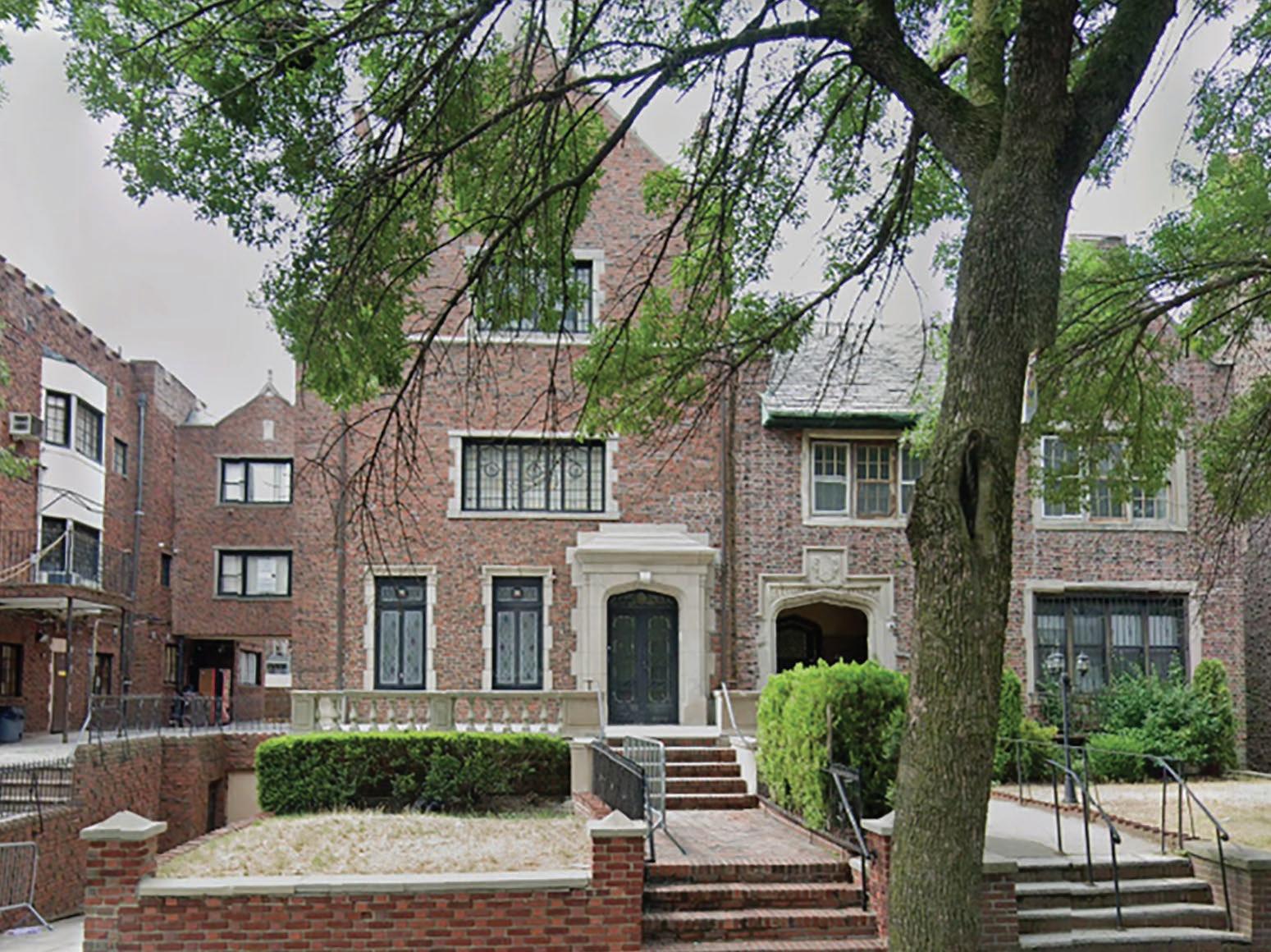
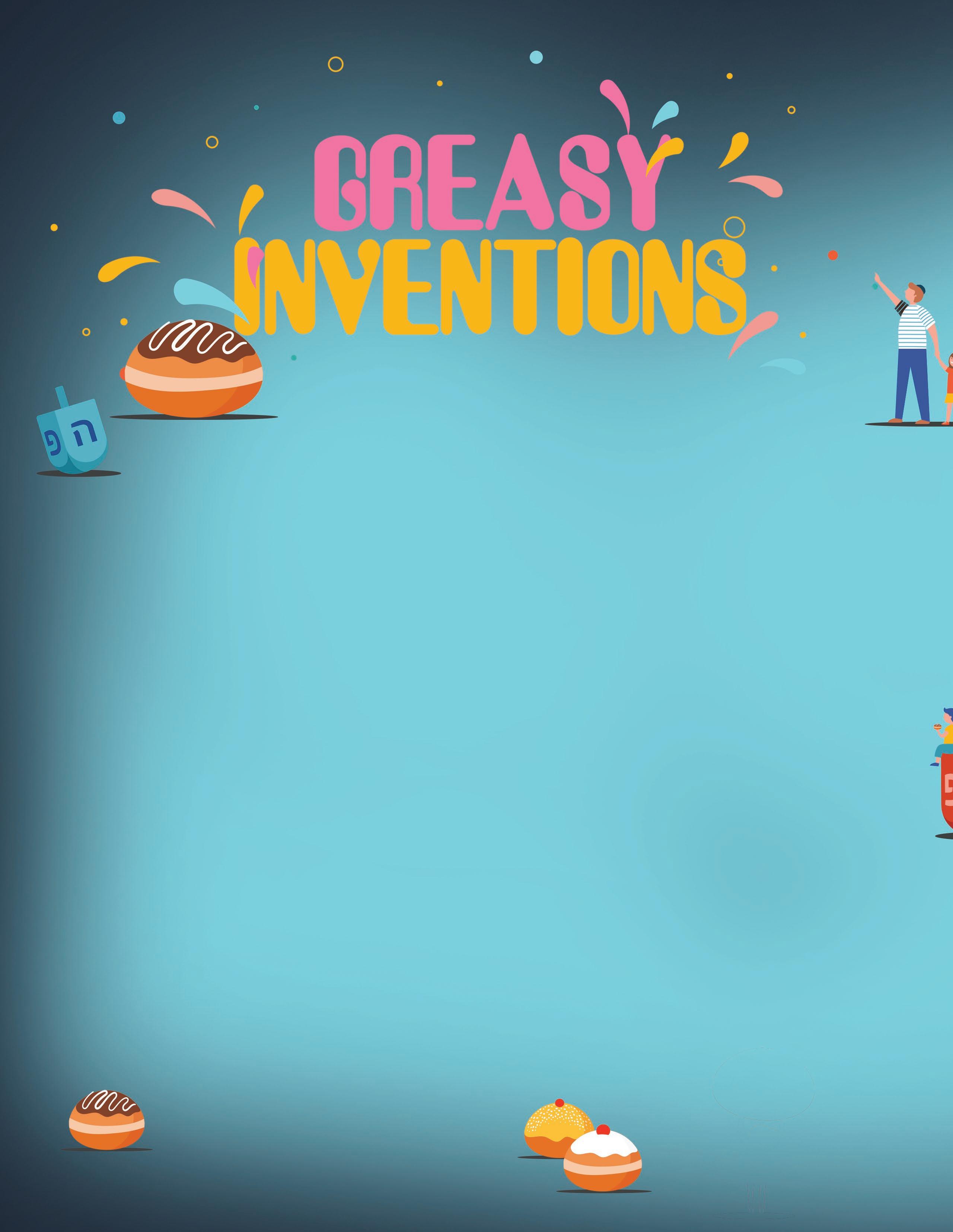 By Mordechai Schmutter
By Mordechai Schmutter
As a nation, we’re great at coming up with products that should exist and then selling them, especially when it comes to the yomim tovim. I’ve suggested in the past actual helpful Chanukah products that exist, such as Chanukahshaped cookie cutters, the “My First Chanukah” coffee mug, dreidels filled with nosh, dreidel-shaped ice cubes, Chanukah-print napkins, Chanukah-print juggling balls, and Chanukah-print stress balls, for when people are using the Chanukahprint juggling balls near the candles.
There’s even such a thing as pre-made cups of oil, so that you don’t have to go through the hassle of pouring oil into a cup, like some kind of caveman. You just put out a cup of hard oil that looks like the top of the chicken soup when you take it out of the fridge, and you’re done,
and you can spend all the extra time you saved waiting around until it’s time to light candles. They’re also great for recipes. I’m actually not sure why they don’t sell pre-made cups of kiddush and havdalah, where you just take it out of the fridge and drink through the layer of fat. But this is very convenient when it comes to Chanukah, mostly because we buy oil by the jug, and we can’t pour it into a tiny cup without filling the living room knee-deep in oil.
But there’s room for improvement. For example, why are Chanukah-themed napkins the least absorbent napkins? And that’s all they have at the party. How are we supposed to sop oil out of our food?
So last year, I reached out to readers with my greasy, oily hands and asked them to write in with ideas for more Chanukah products that don’t
exist but that we need. Not that we don’t need Chanukah print-stress balls, especially at family get-togethers.
“Is there anything here that I could eat without keeling over?”
“Yeah, I brought Greek salad.”
“Oh. Are we allowed to eat that?”
“I don’t know. It has olives…”
Many readers wrote in with great responses, which I’m printing here as a gift to you. If you don’t hold of gifts, please send me money.
We’ve also included a first step for each of these ideas to get them off the ground.
-One reader, J.S.S., writes that we need a self-flipping latke pan. How safe would that be? You’d have to be out of the room when you’re using it. Maybe it’s good if you want to get the frying done while
you’re all lighting in the living room. I personally usually use a spatula and also a fork, because I’m not so dexterous with the spatula. I brace the latkes against the fork and flip them over. The amount of oil I fry latkes in, I can’t actually flip the latkes in the air. Though I’m still all for it, because what I really need is something to help me flip omelets, seeing as I have never once done so without the omelets falling apart. Whenever I try flipping them, I make the egg and the ceiling treif.
TO START: Something like Liquid Skin. In multiple skin tones, such as purple.
problem with wicks.
TO START: Maybe some kind of eject button on the handle, like in military jets.
-C.C. suggested colored kids’ candles that don’t break so easily. Because there are exactly 44 candles in a box, which his exactly how many candles one person needs, assuming none of them are broken. Are we supposed to just melt them back into one piece? Or will that make them too small to last 30 minutes?
Do I have to buy an entire second box because at least one candle in each box will be cracked? Also, kids are handling them.
Not that it matters. I have to buy more than one box per kid anyway, because everyone wants specific colors each night. I don’t know why. It’s not like the different colors taste different.
-Y.E.B. suggested a colored candle that automatically expands or contracts at the bottom to fit into any size holder so we don’t have to melt it in each time. Or at least a candle menorah that actually accommodates the size of most candles. My kids keep coming home from school with menorahs they made themselves that use metal nuts to hold the candles. The teacher knows they make bigger nuts, right? They come in all different sizes. You can bring a Chanukah candle to
-But we do have others. N.G. writes that we need some invention to get yesterday’s used wicks out of those little metal tubes.
“My wife keeps getting mad at me for getting the family tweezers all oily,” he says.
I just usually stick one end of the tube in my mouth and blow, and worry about the far side of the room later.
TO START: Some sort of wet/ dry vac.
-And it’s not just the metal holders that have issues. M.M.S. wants to know why there are no floating wicks floating wicks that don’t flip over? Why does the silver side weigh more than the wood side? Are they using real silver? The silver side is supposed to go on top, right? Why on earth is the more buoyant part under the less buoyant part? Who are we trying to look presentable to, on our oil-covered table?
home depot and figure out what fits. Is there no nut that is exactly the same size as a candle? Am I supposed to physically screw the candle into the nut? This is how you break candles.
TO START: A pencil sharpener in the side of the candle box. Also, we don’t have this
TO START: Maybe some kind of weight on the bottom. Or a heavier wood. They all float, you know.
-Or we should have, as C.K. suggests, some way to make it so that when you dance near the menorahs, the candles don’t shake. Some sort of quake-proof hadlakah table? We always have to get as far away from the candles as we

can when we dance while also being able to still see them while going around in a circle facing inward. My wife doesn’t even let the jumpier kids into the same room as the candles. So much for pirsumei nisa. Though I suppose they can see them from outside the house. Maybe that’s where we’re supposed to dance. This was much easier when we lived in a basement apartment. Except for the part about having only one window, which faced a concrete wall.
Maybe we can also use this table for dreidel, so no one gets accused of cheating.
TO START: Shocks, like on a car? Also, an all-slow version of Haneiros Halalu.

- E.H. points out that we need a self-cleaning menorah. We need some way to cut through the grease. Hands down the worst part of Chanukah is the part where you have to wash down the menorahs. You’ll be cleaning oil for the next 8 days. And no matter how much foil you put down, your table will be covered in oil. You peel off the layer of foil and there’s oil underneath. How is this possible? Is foil 75% oil? (Oy.) And you have to do it all yourself. You never ask the kids to help you clean that up; that’ll just make it worse. You just do it quietly while they’re in school.
TO START: Non-stick menorahs.

-C.C. also thinks we should invent some kind of dreidel detector that will collect dreidels from all over the house. Dreidels just naturally roll around and under furniture and migrate around the house and down the stairs and into the laundry, and you’re finding dreidels for several months after you clean up from Chanukah. Why on earth do we have so many dreidels? We usually don’t even remember to play until right before shkiyah on the 9th night! Pesach cleaning’s biggest treasure is a handful of dreidels. But there are options. A lot of toys nowadays have features so that you won’t lose them, such as lights and sounds that make noise the entire Shabbos, or when your kid walks away, and don’t stop talking until you pick them up.
TO START: a little button that when you press it, the dreidel beeps, like a car in a parking lot. Or make all dreidels glow in the dark. This would also bring a fun twist to the games: Dark Dreidel. “Hey! Who keep swiping the pot?”
We also need some kind of locator for our latkes if we get the self-flipping latke pan. Making them glow in the dark hasn’t been enough.

